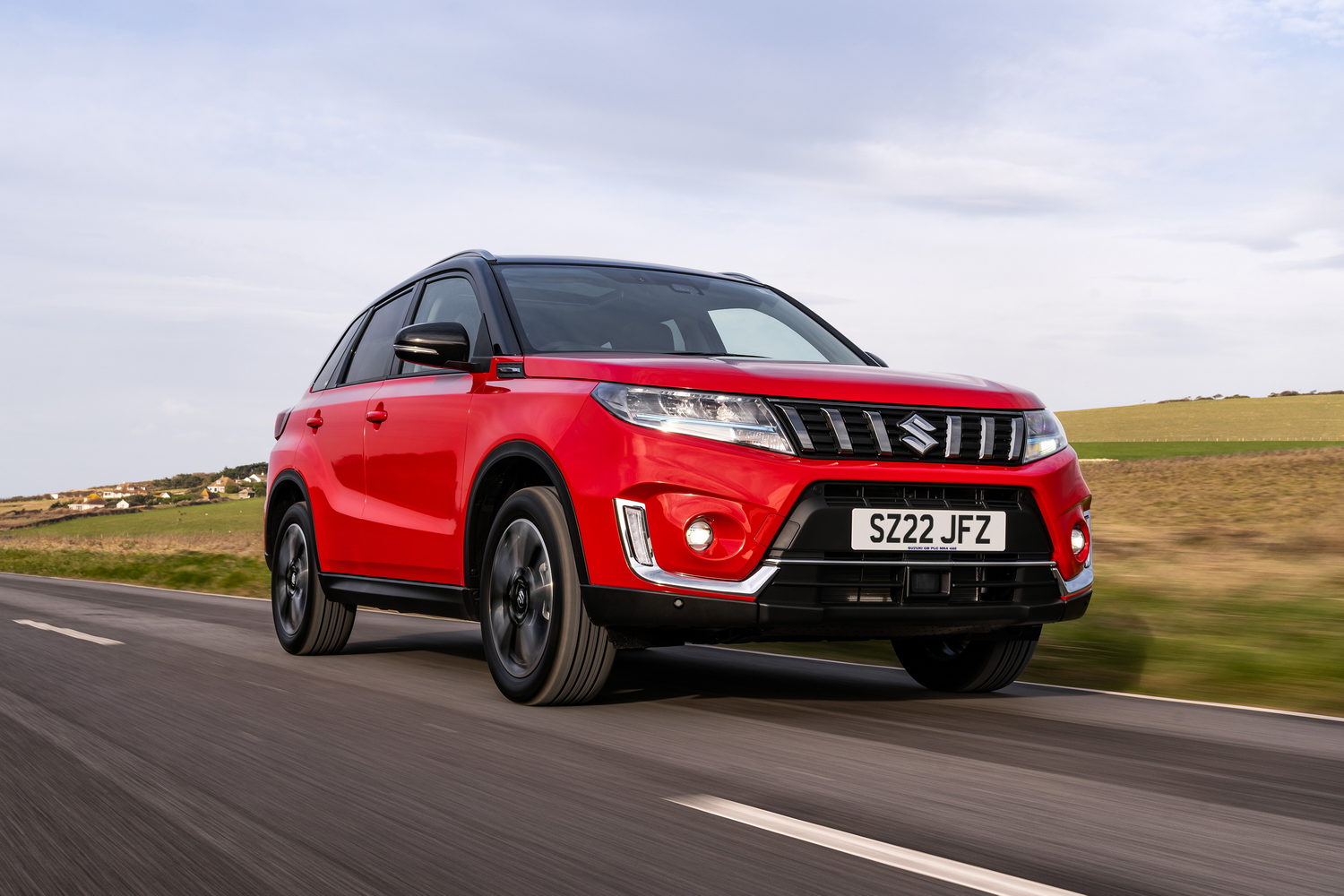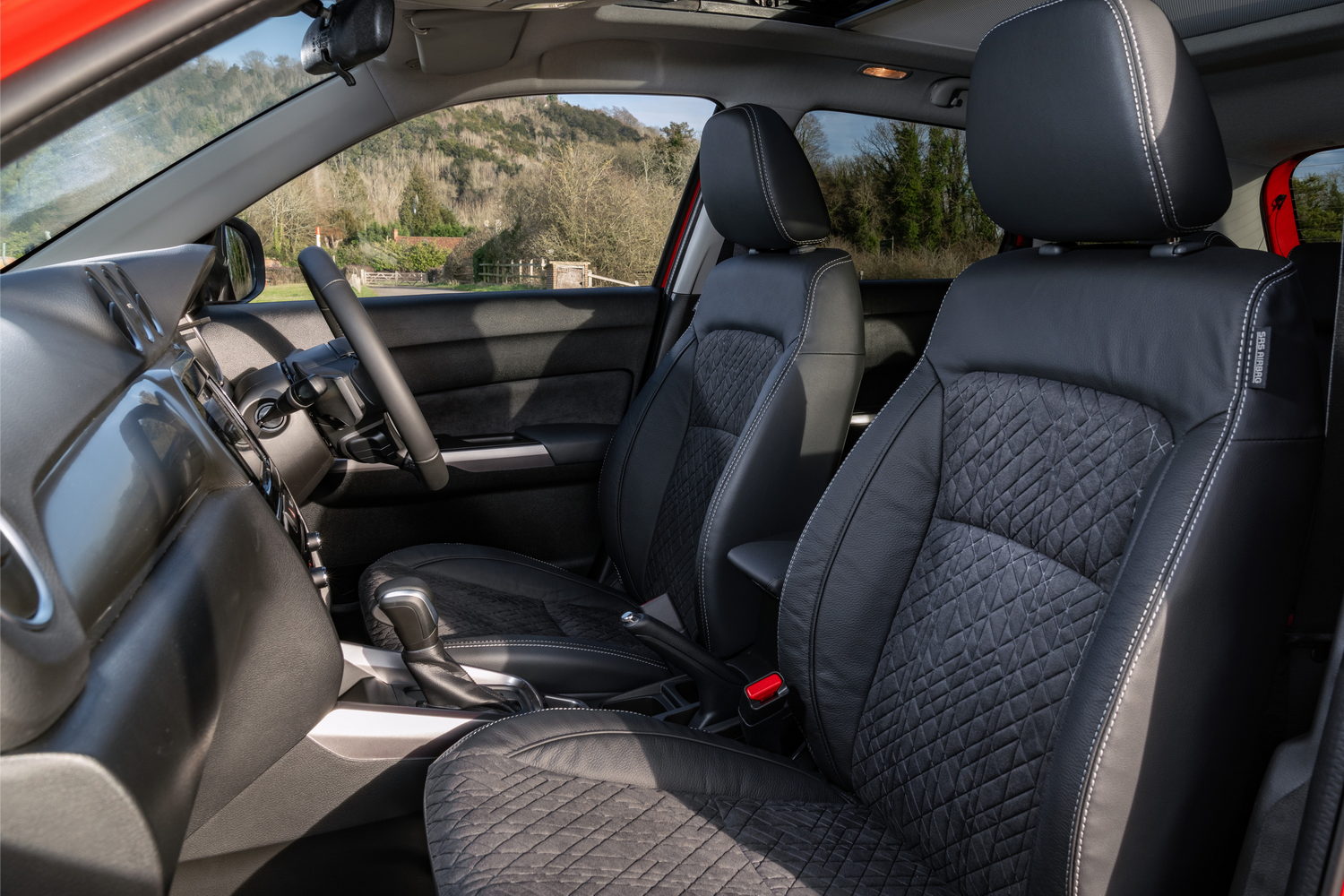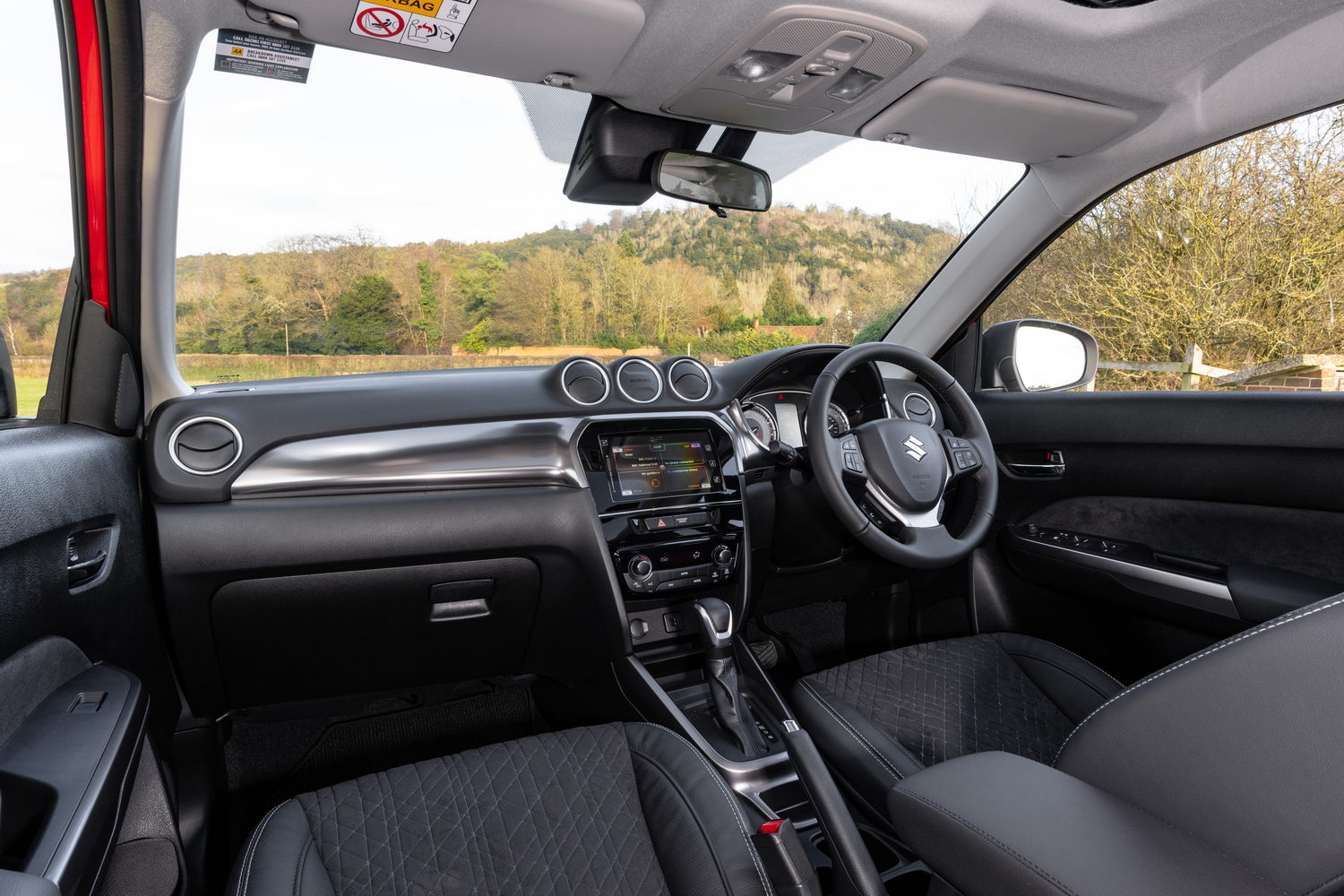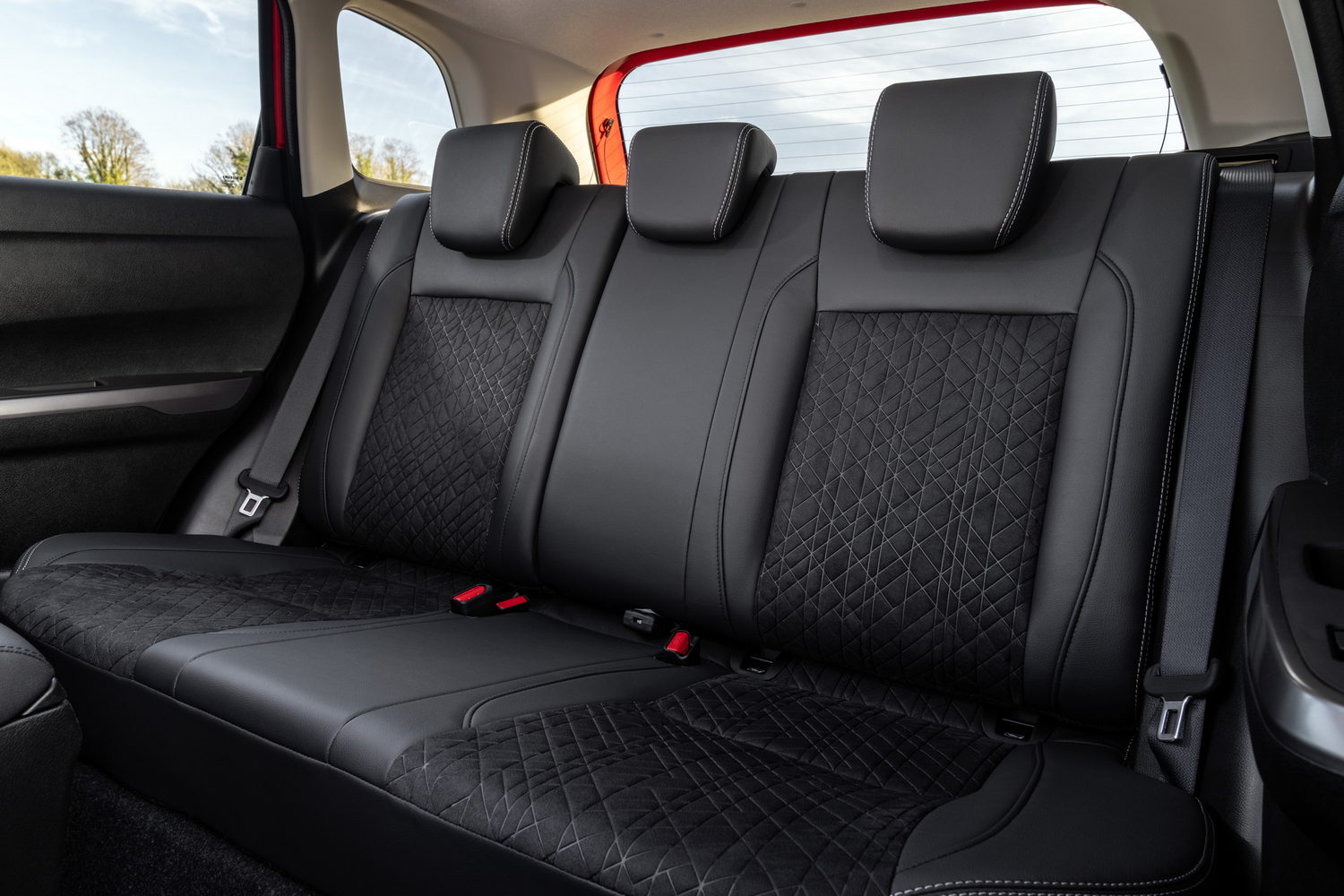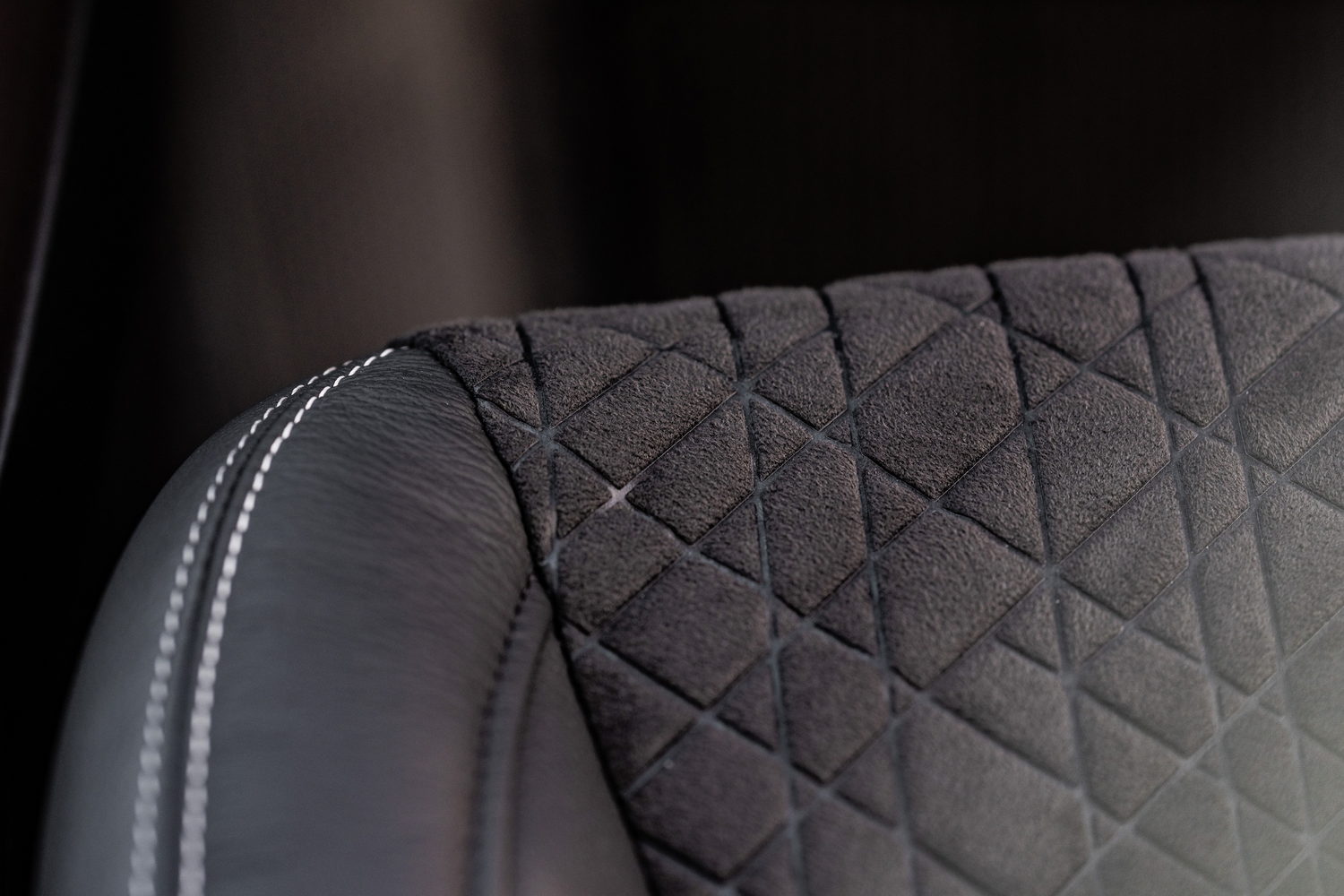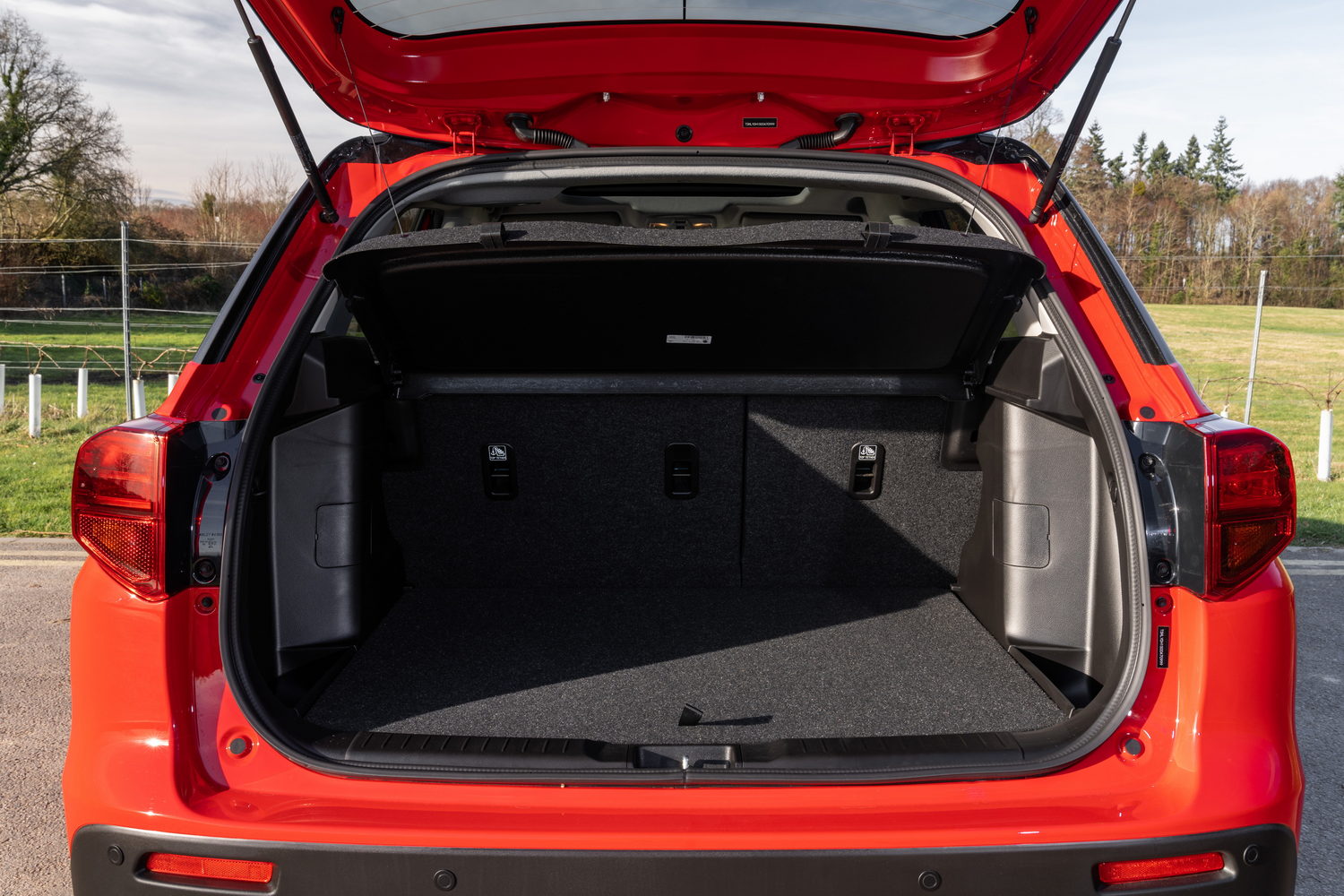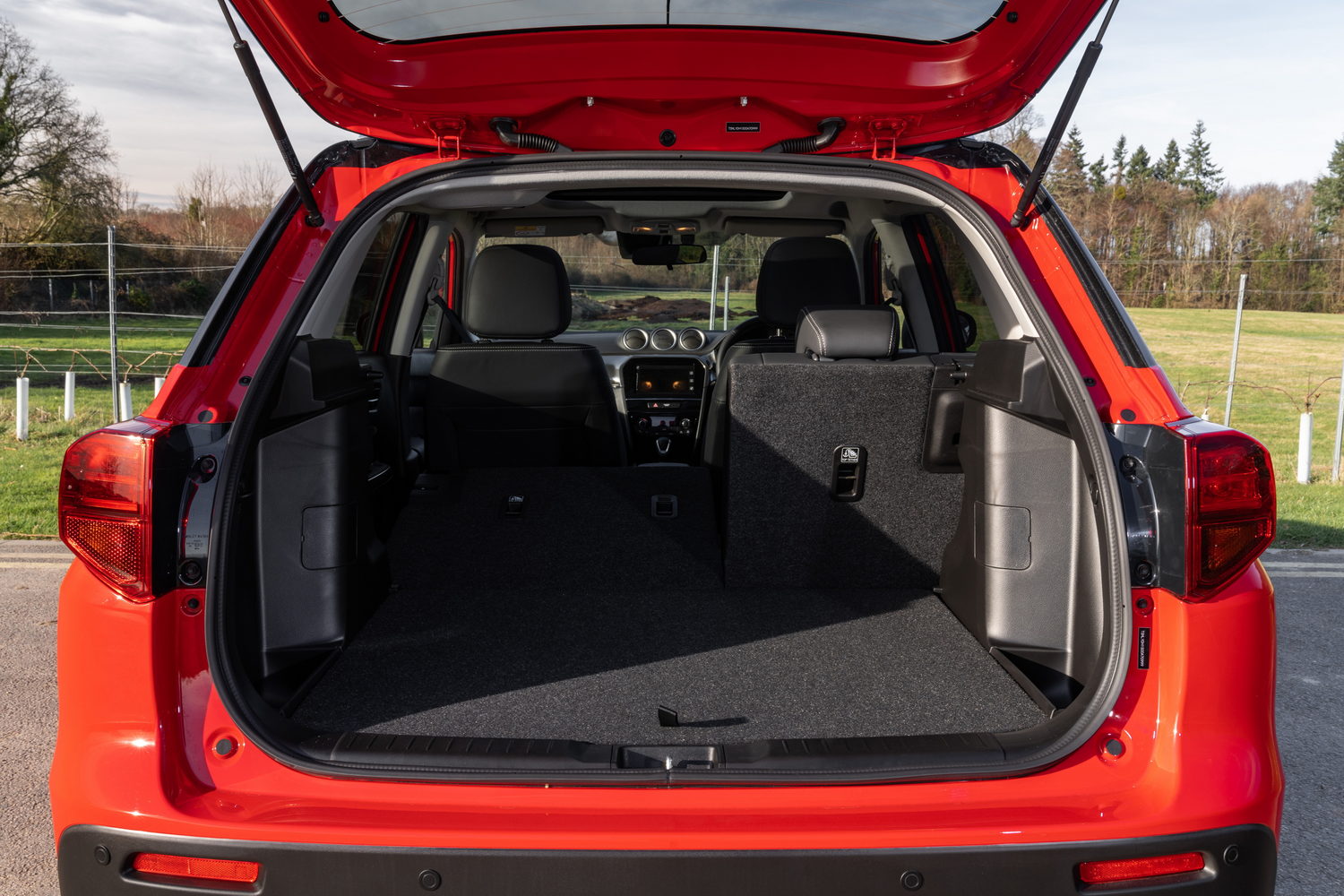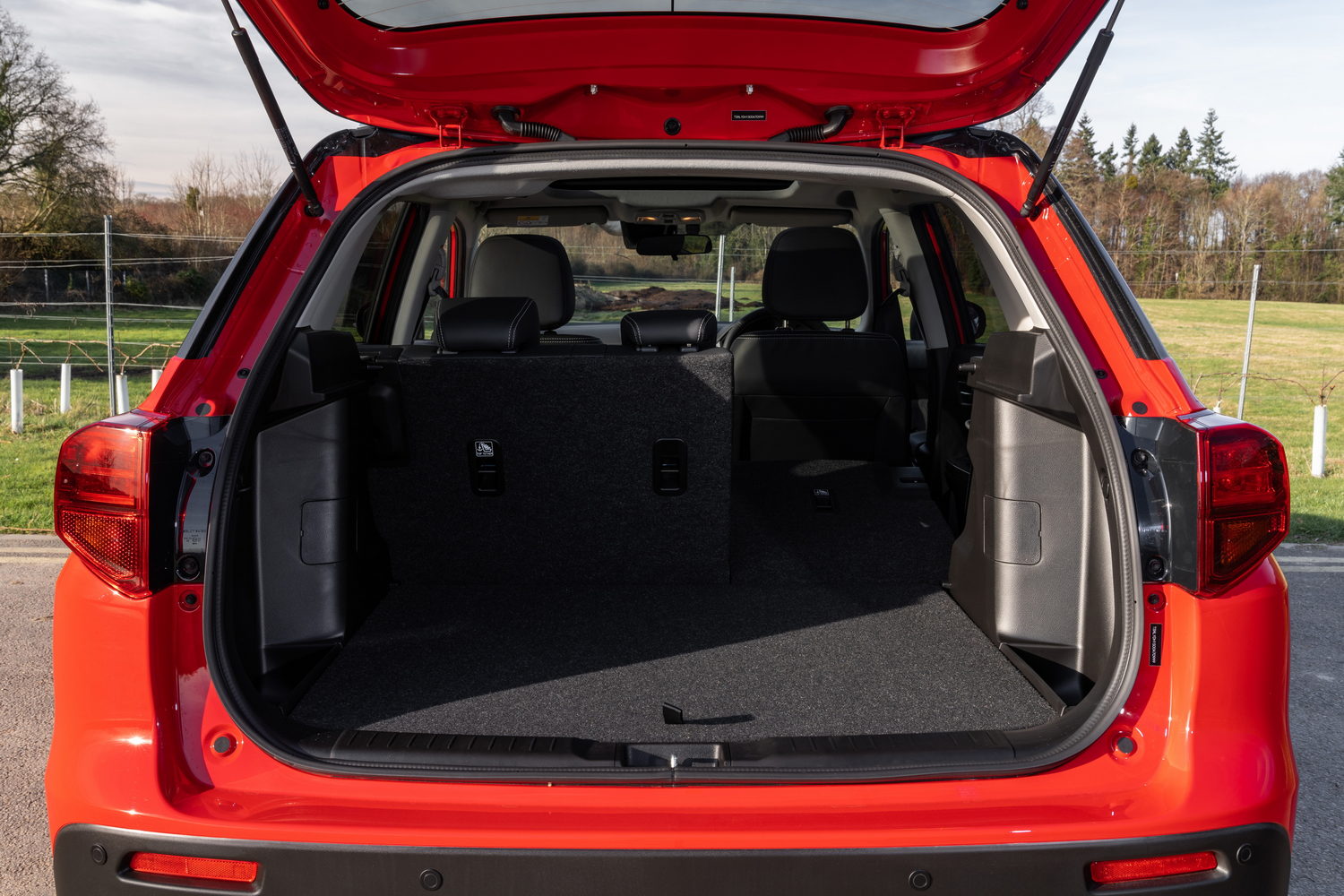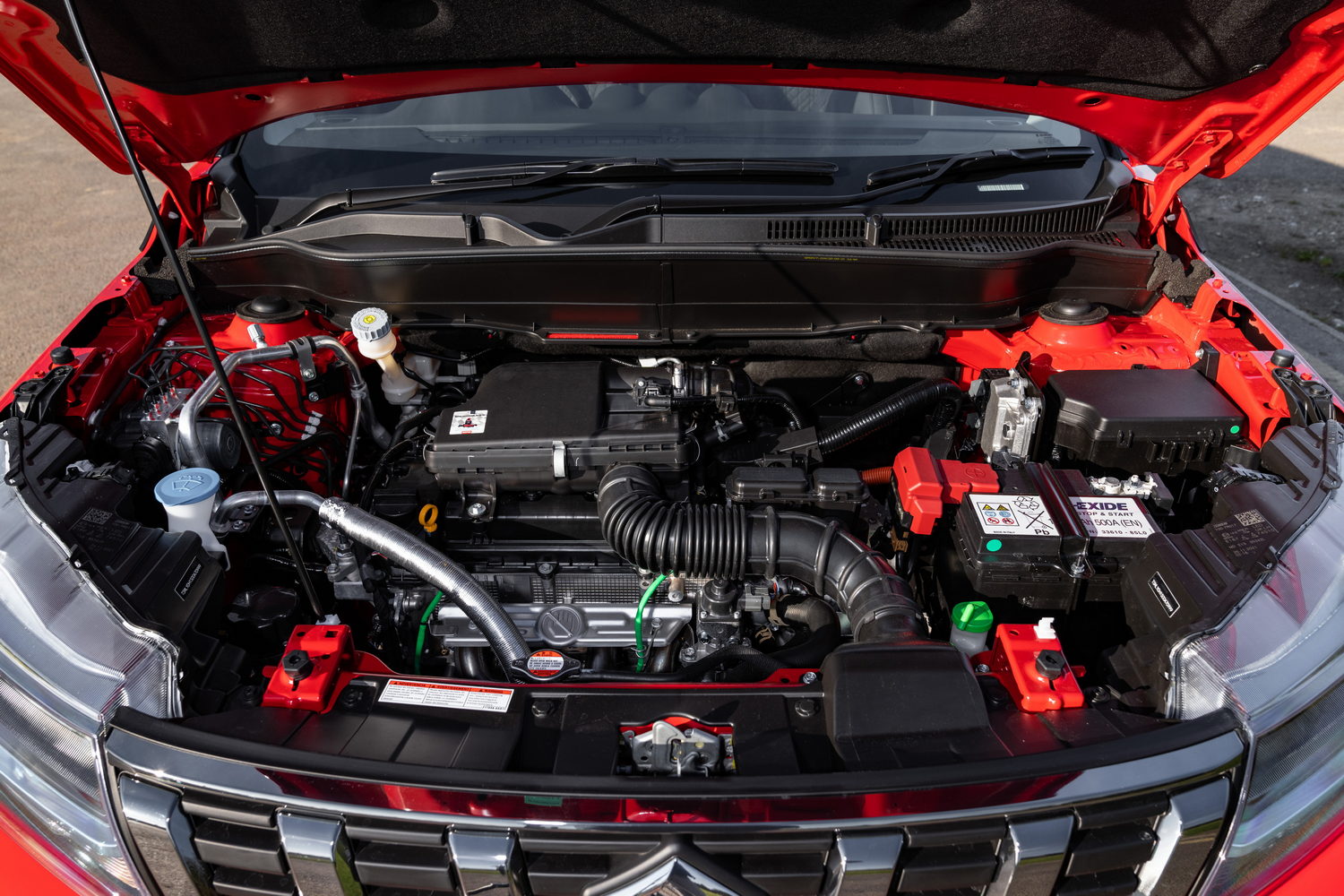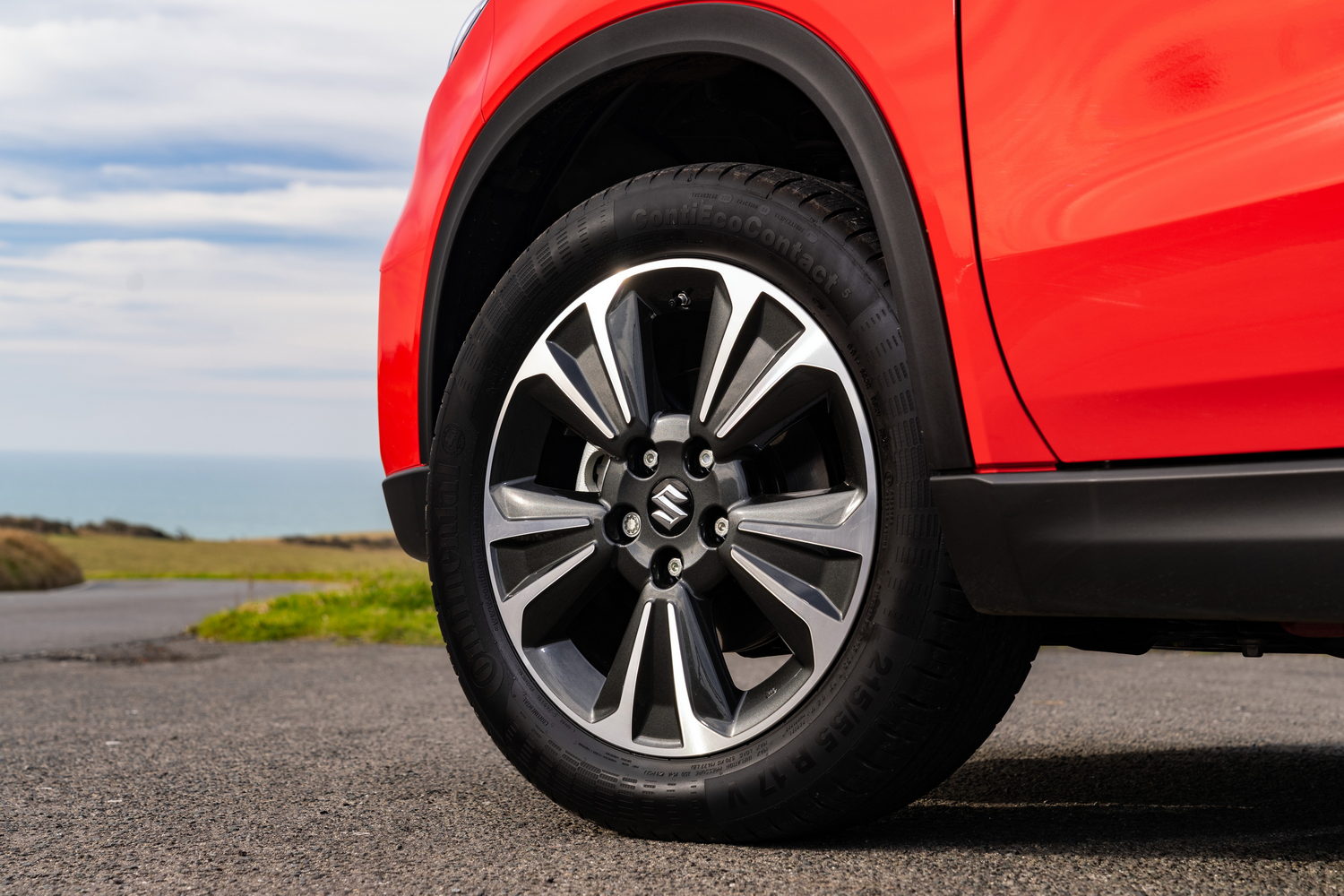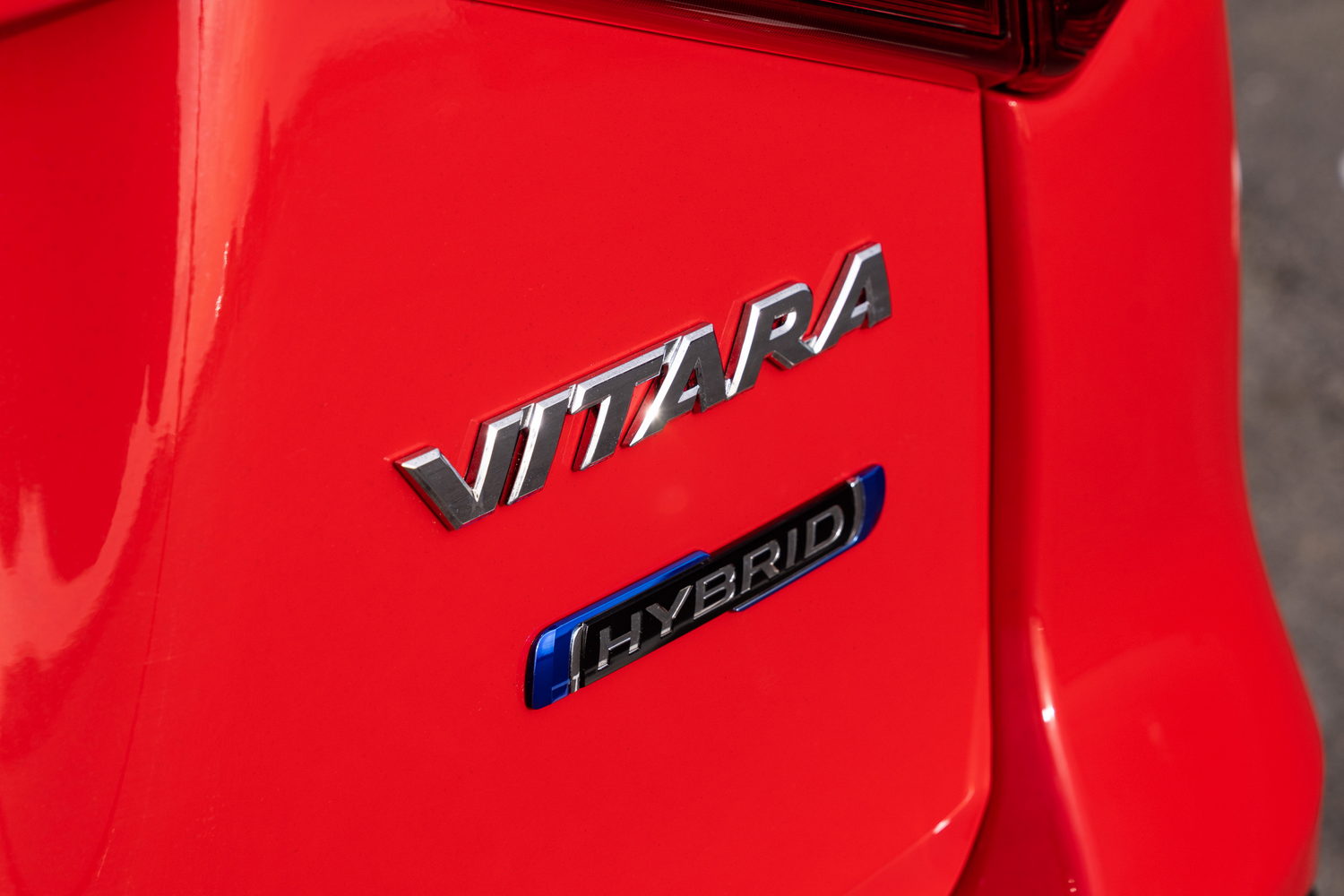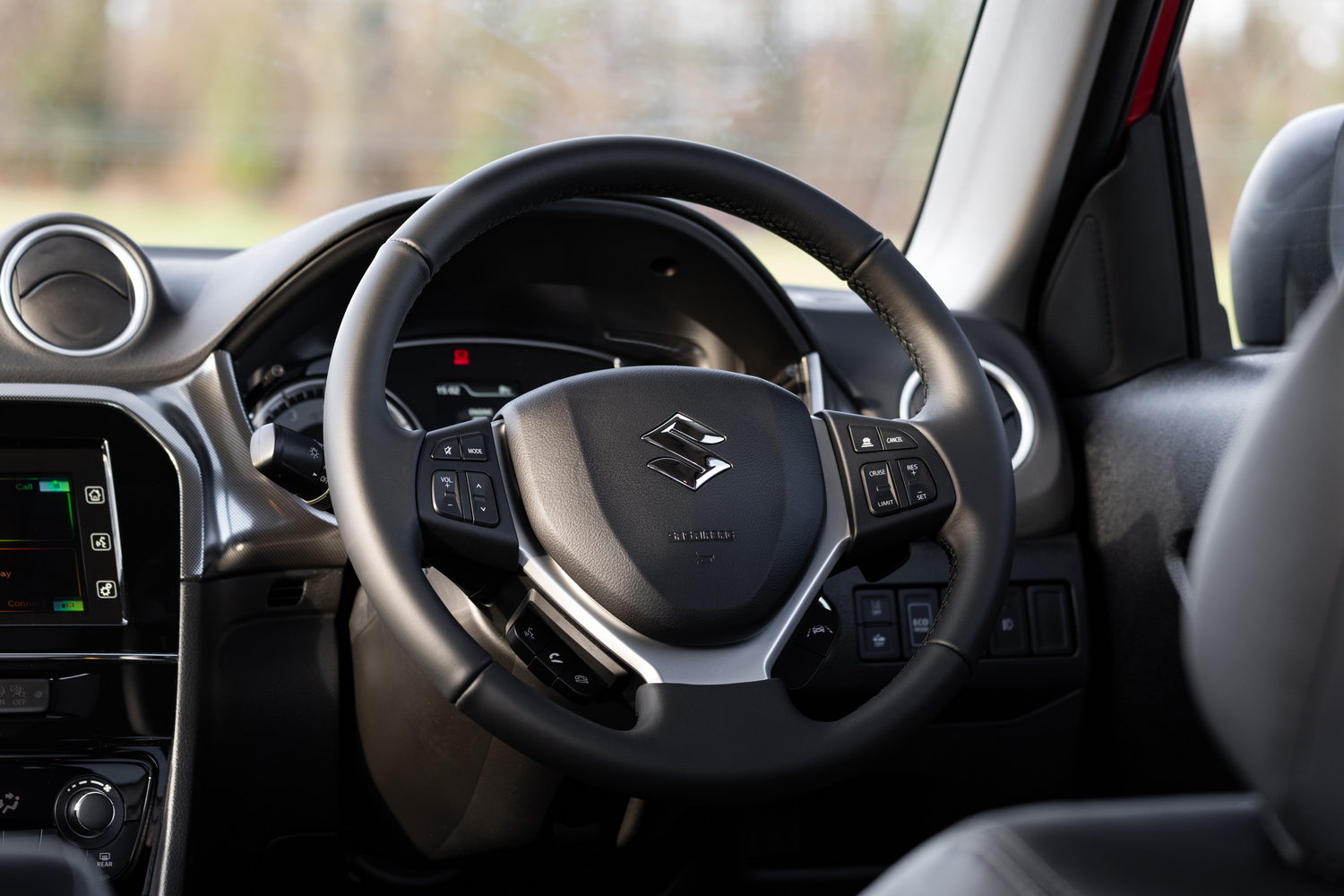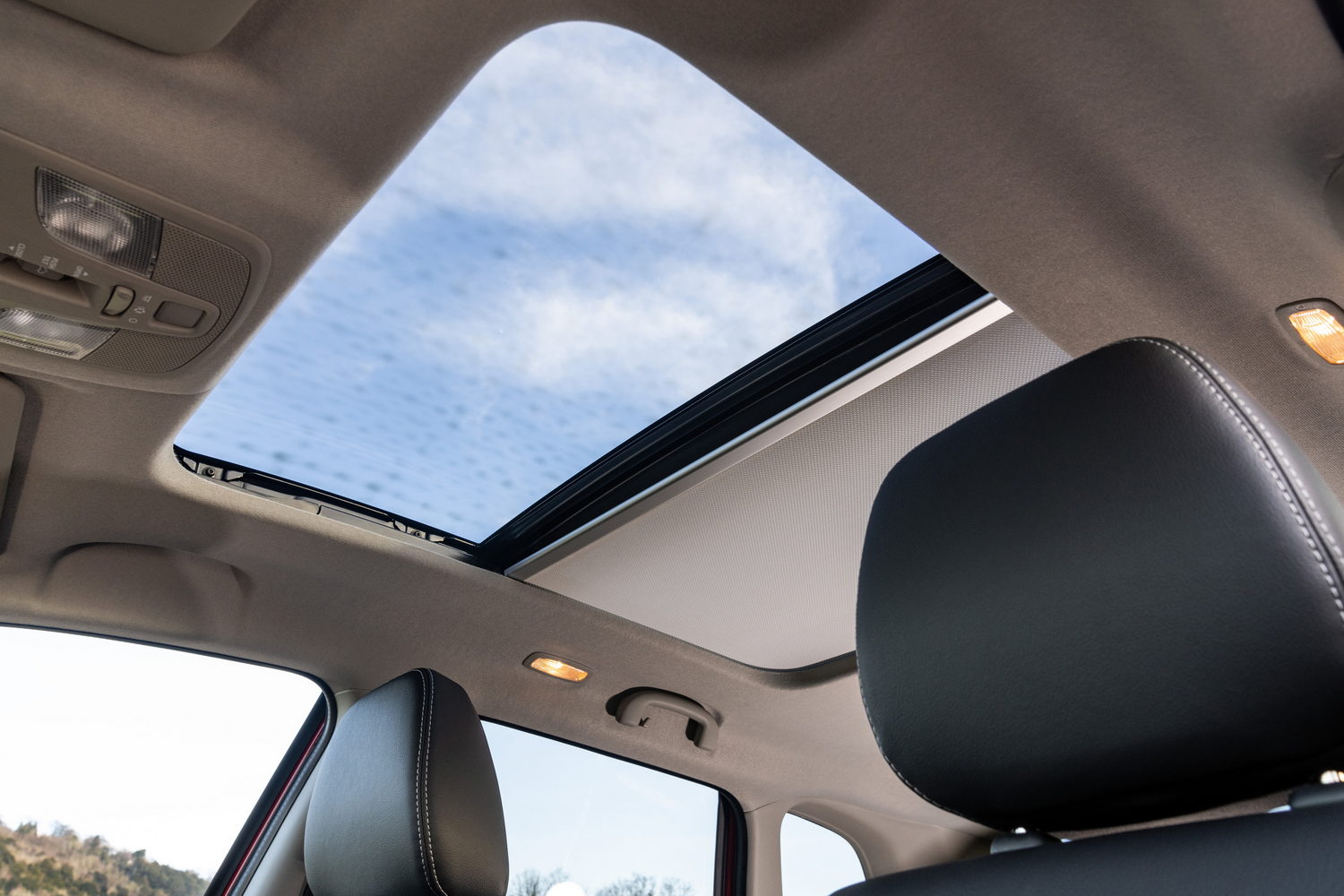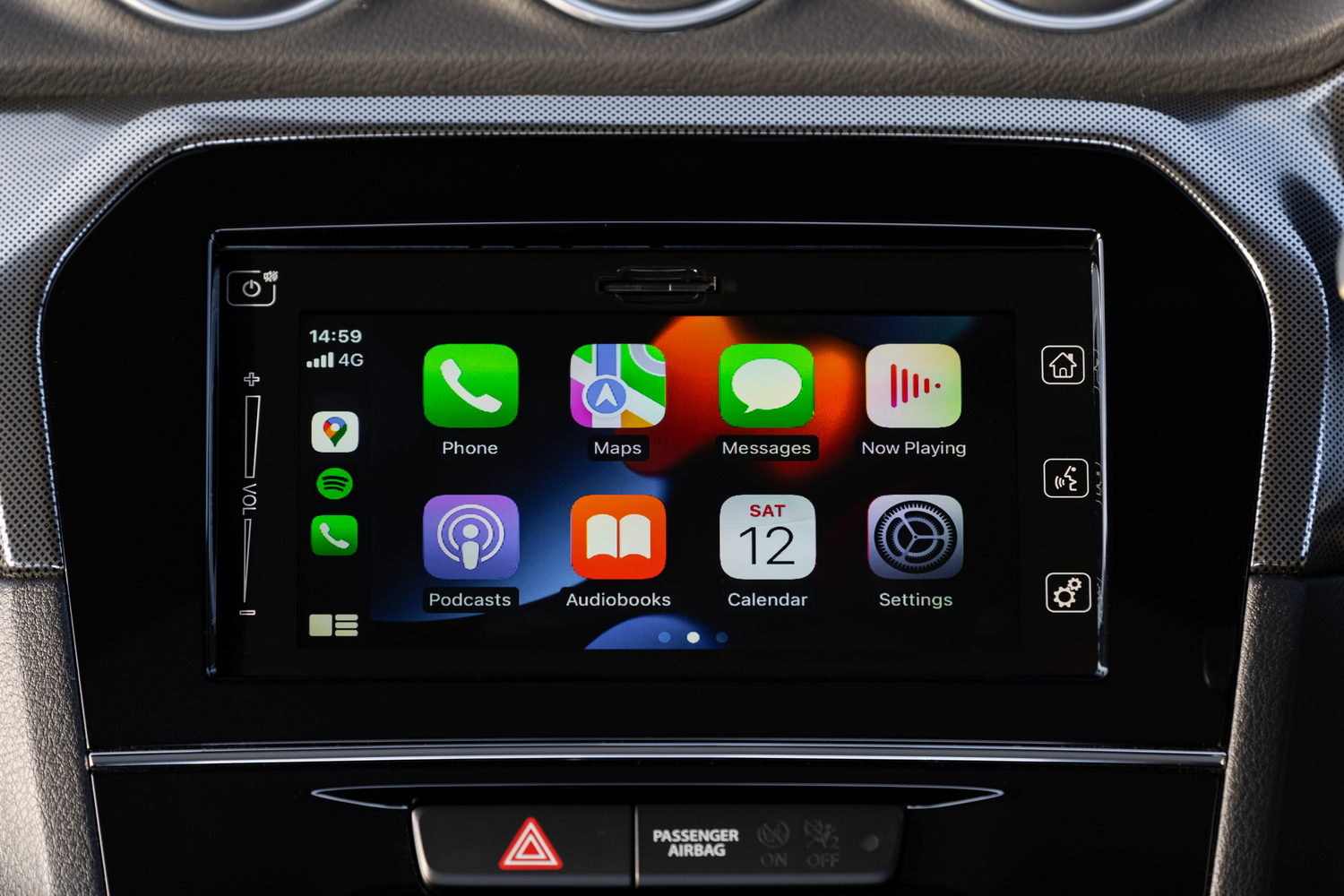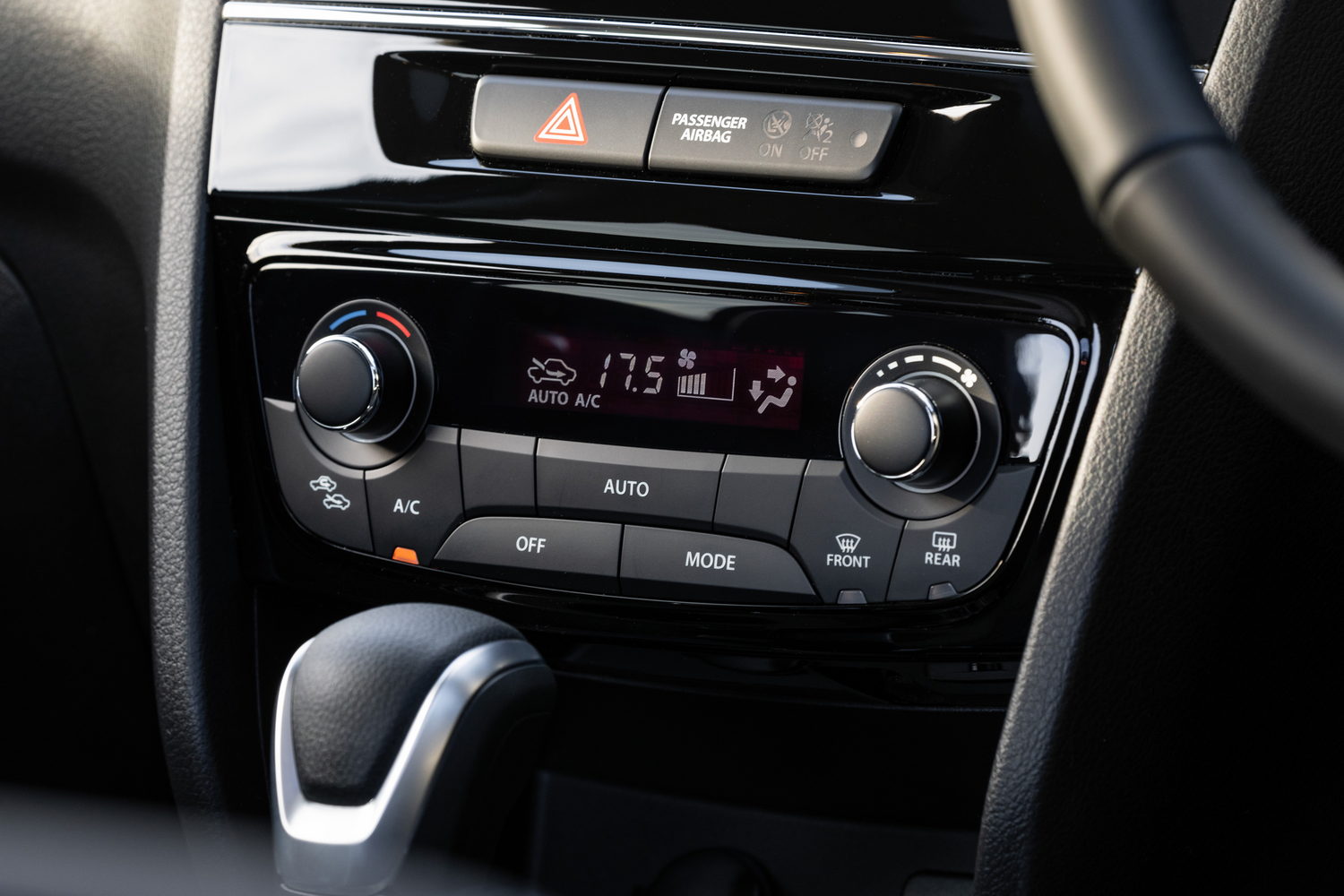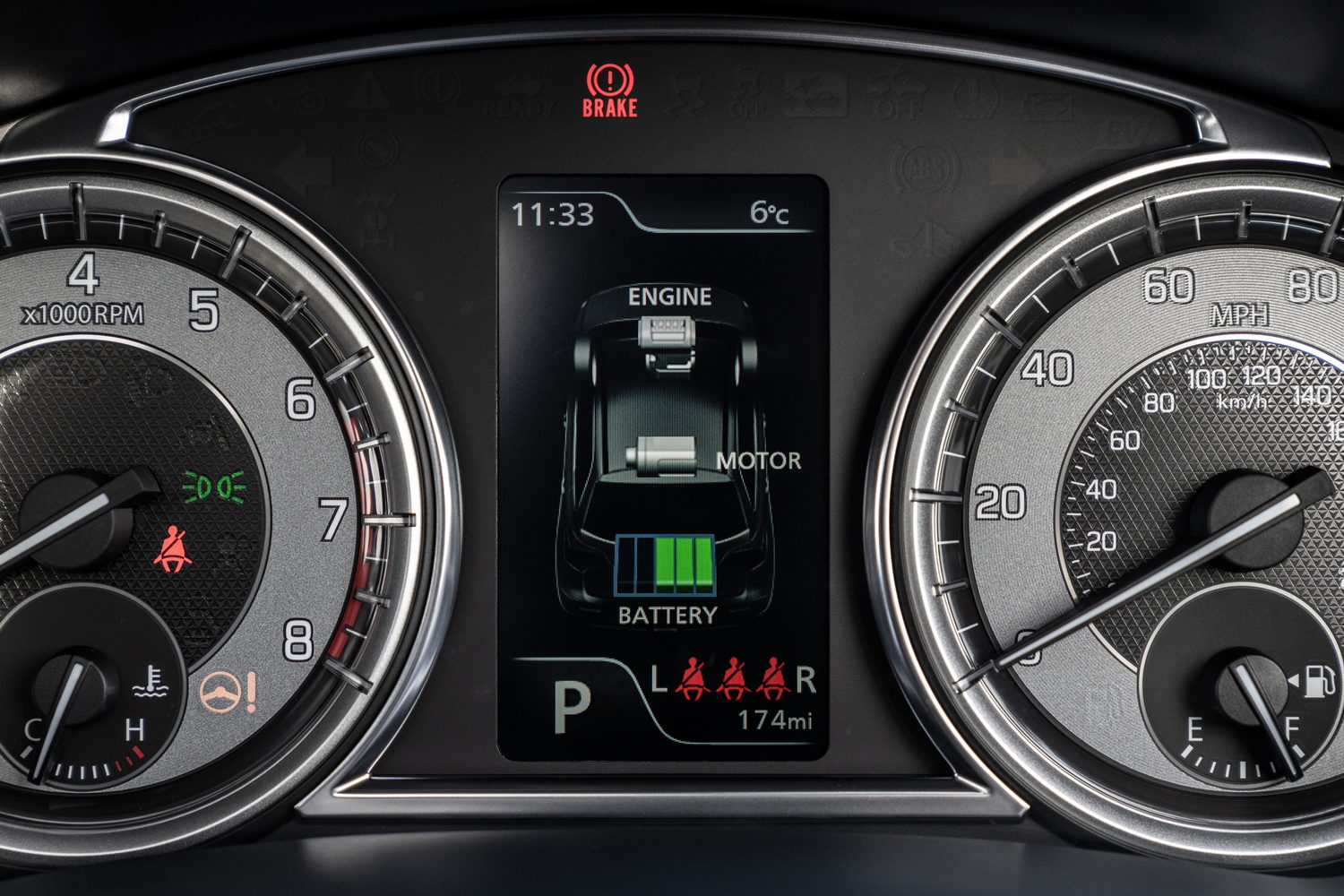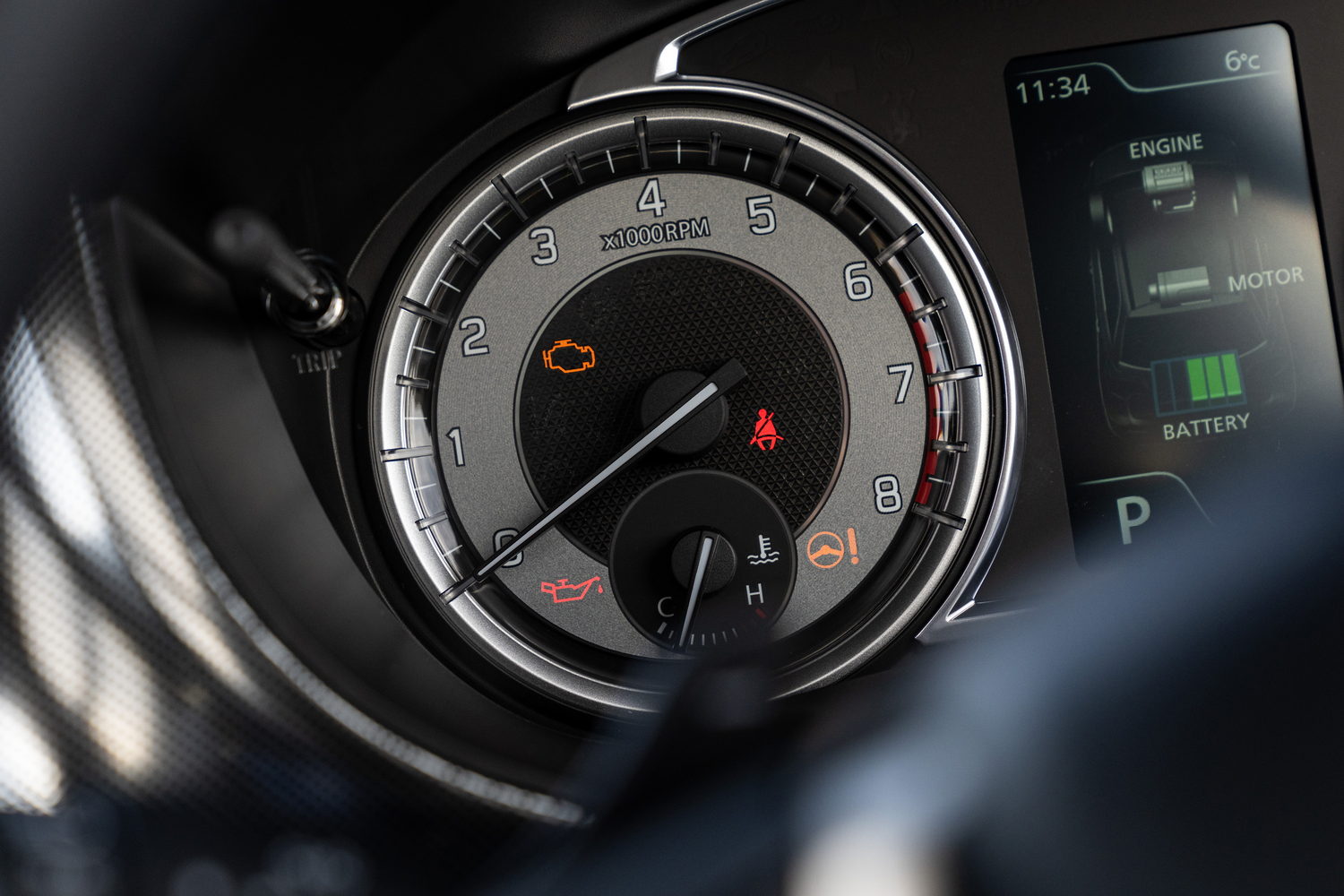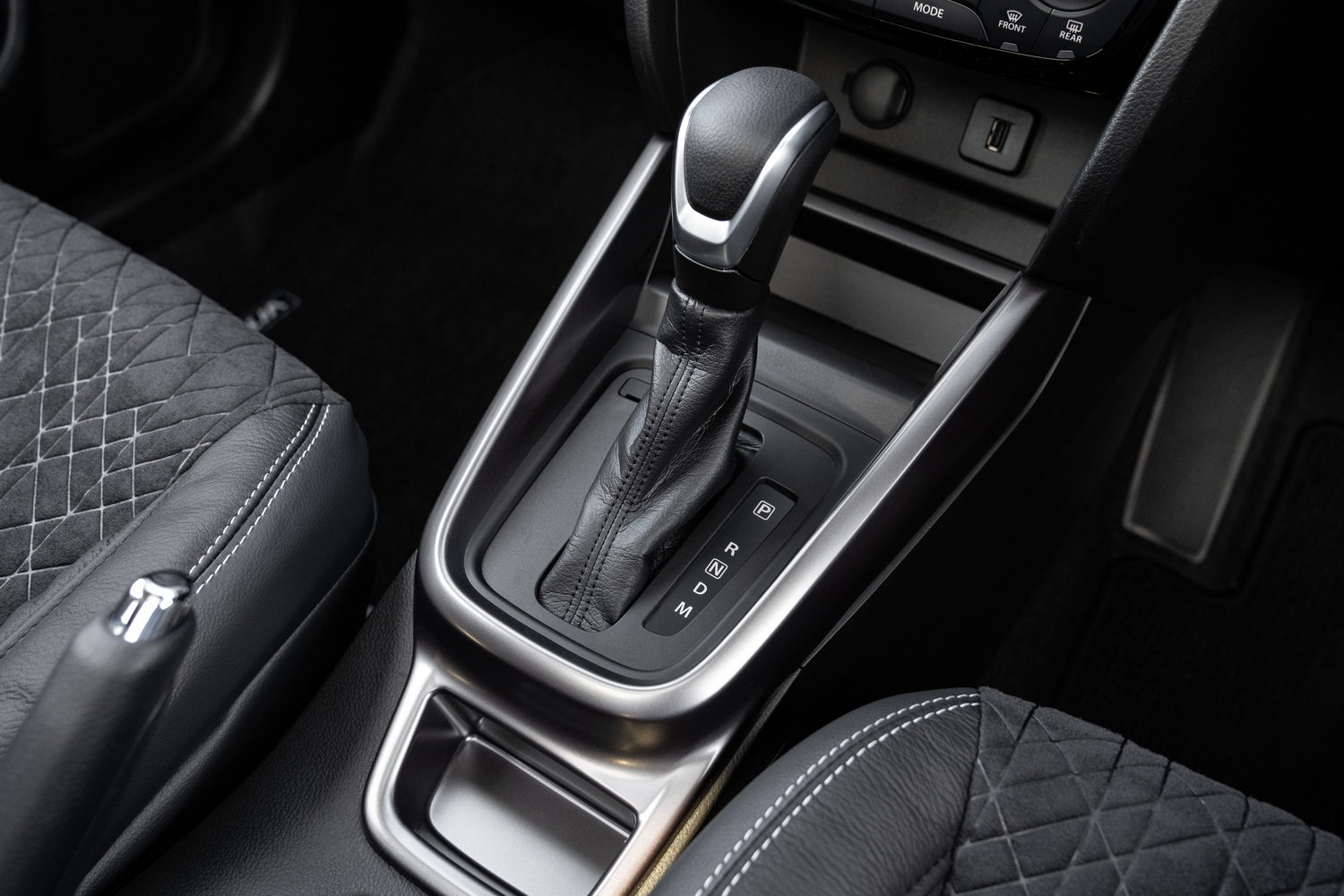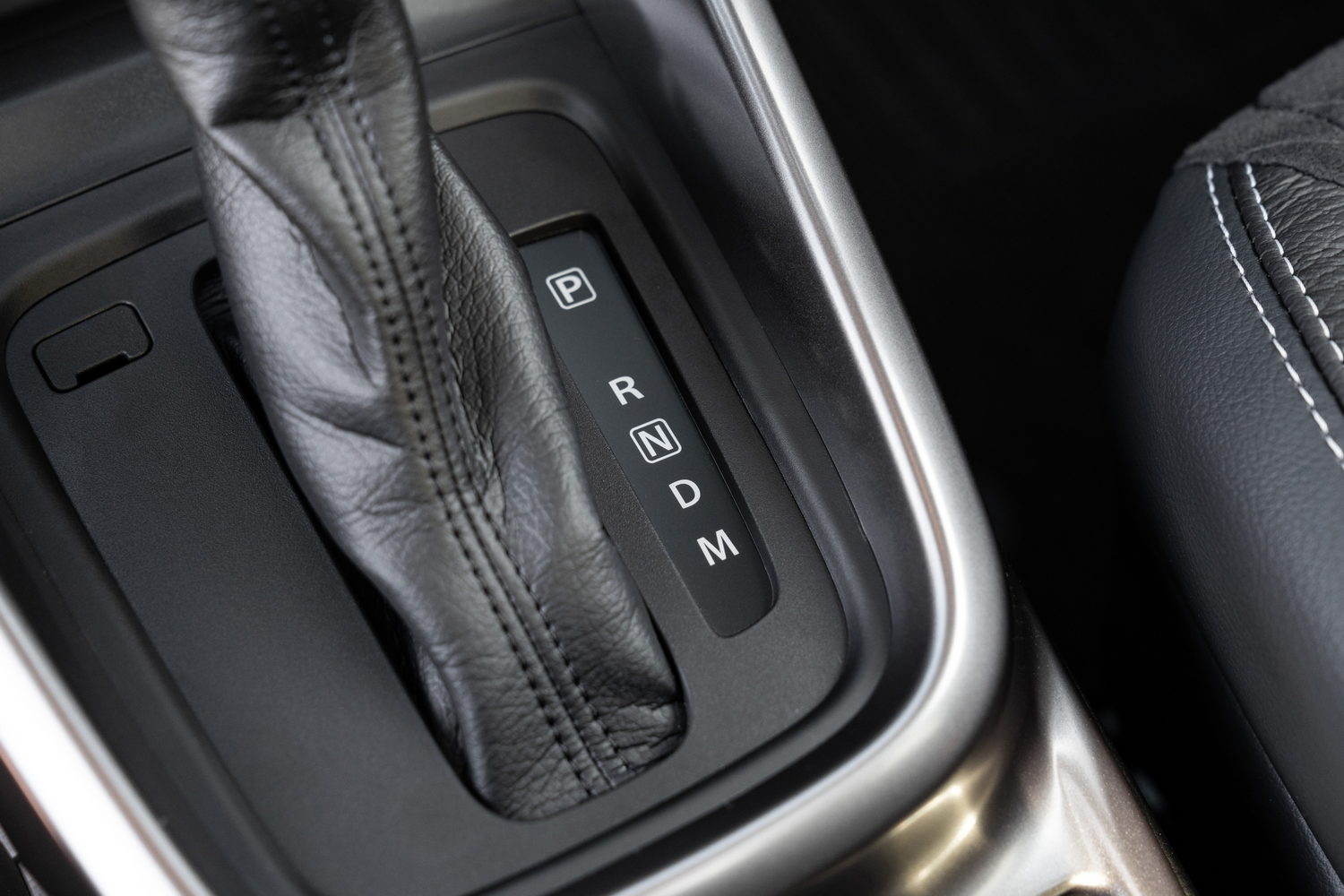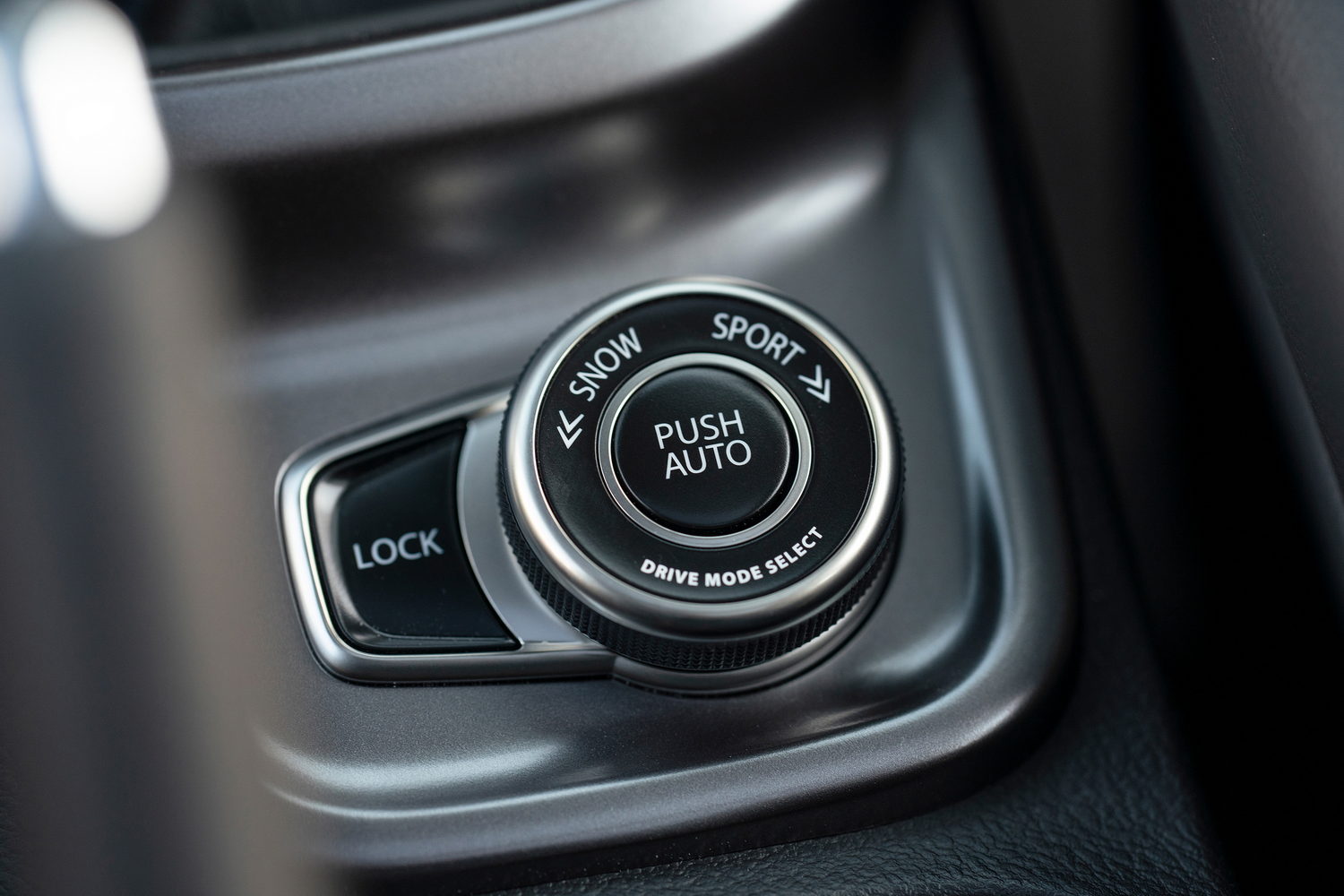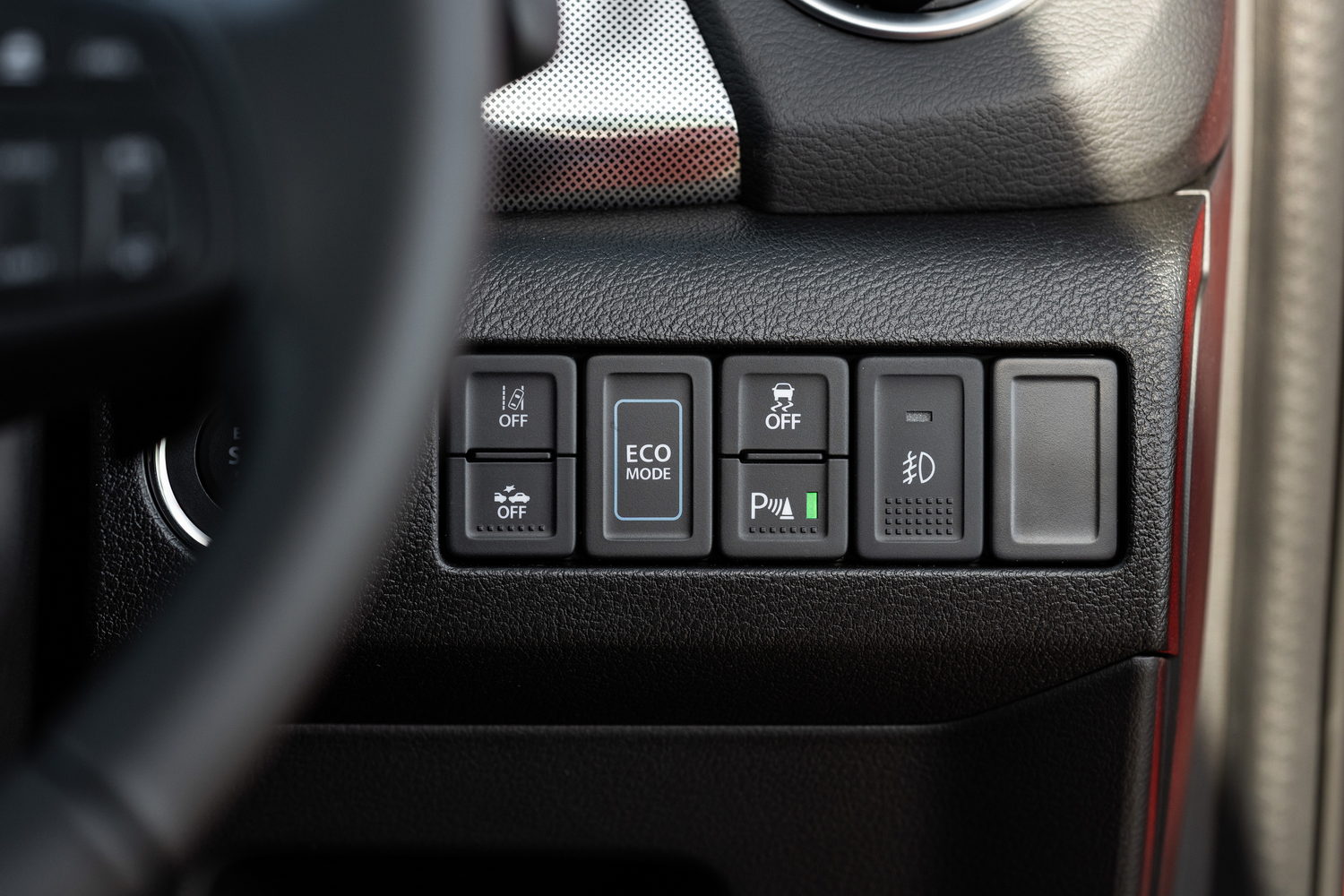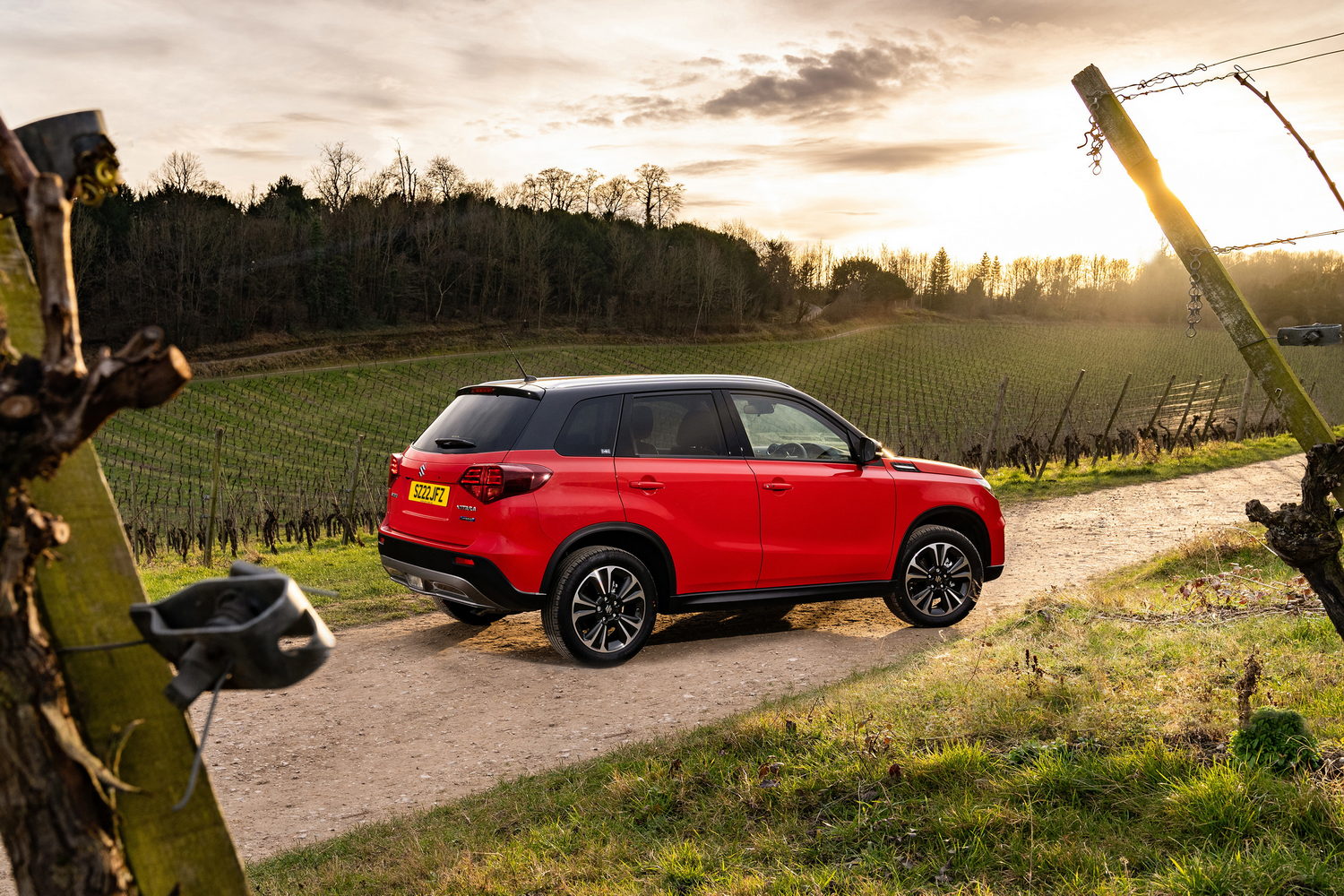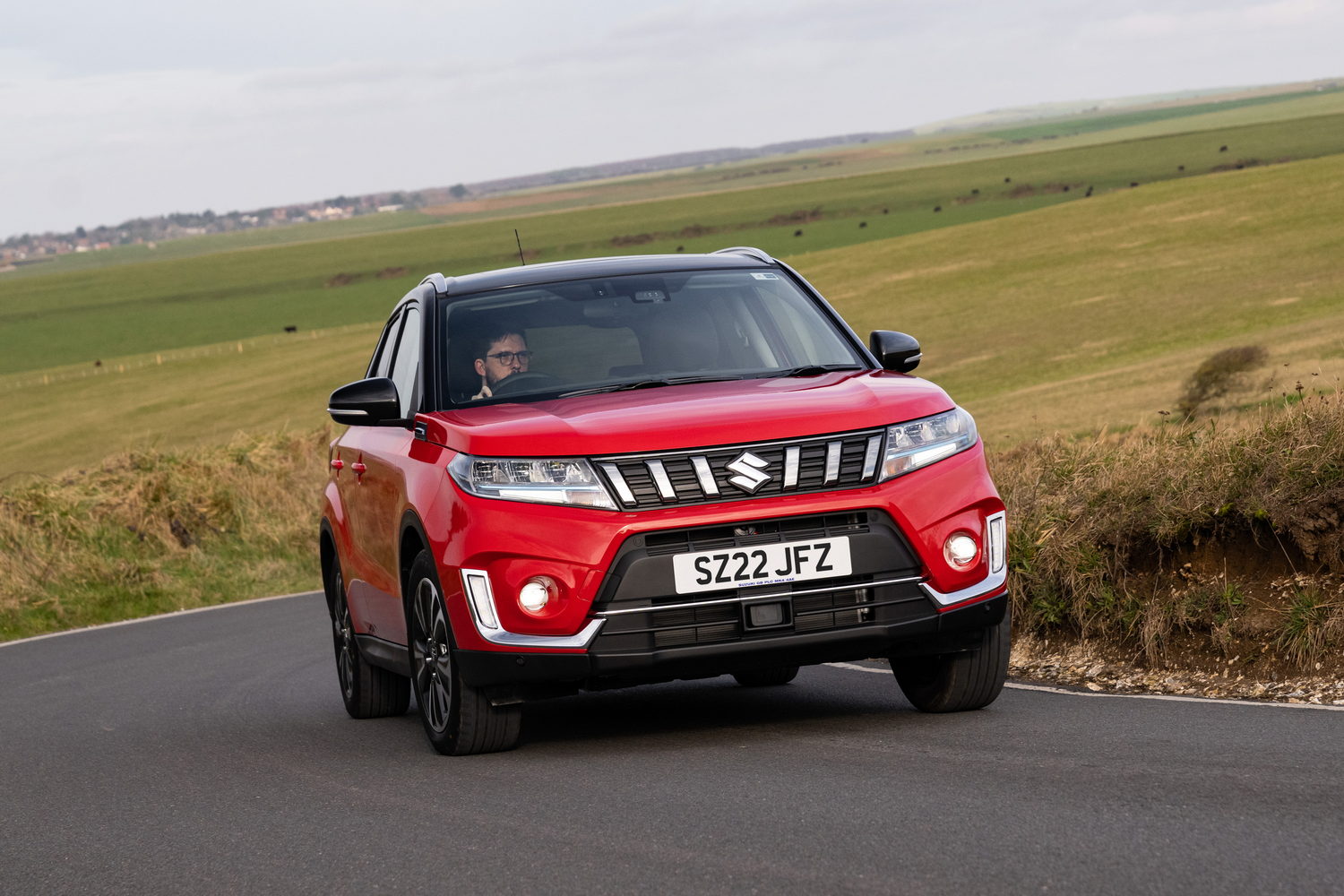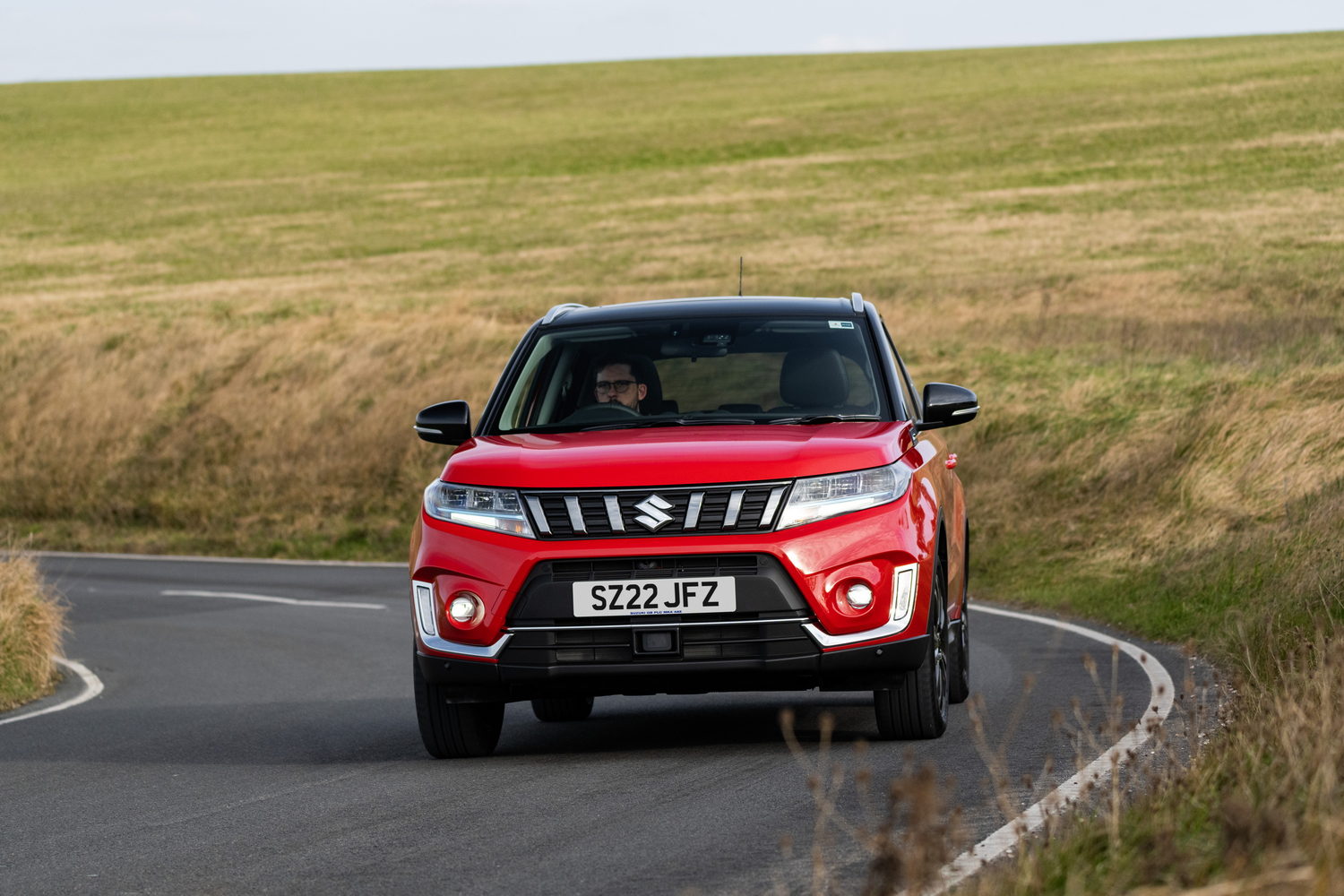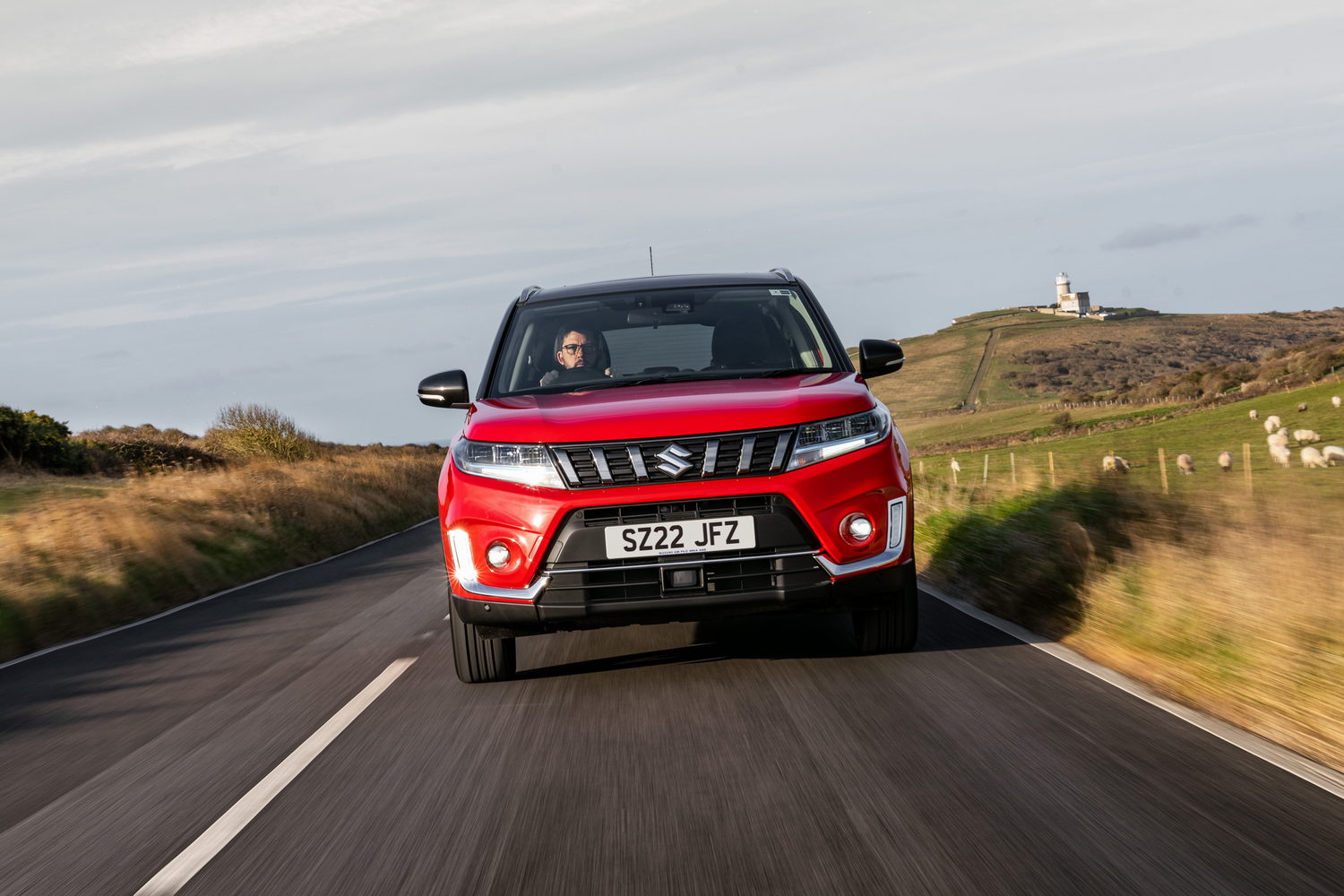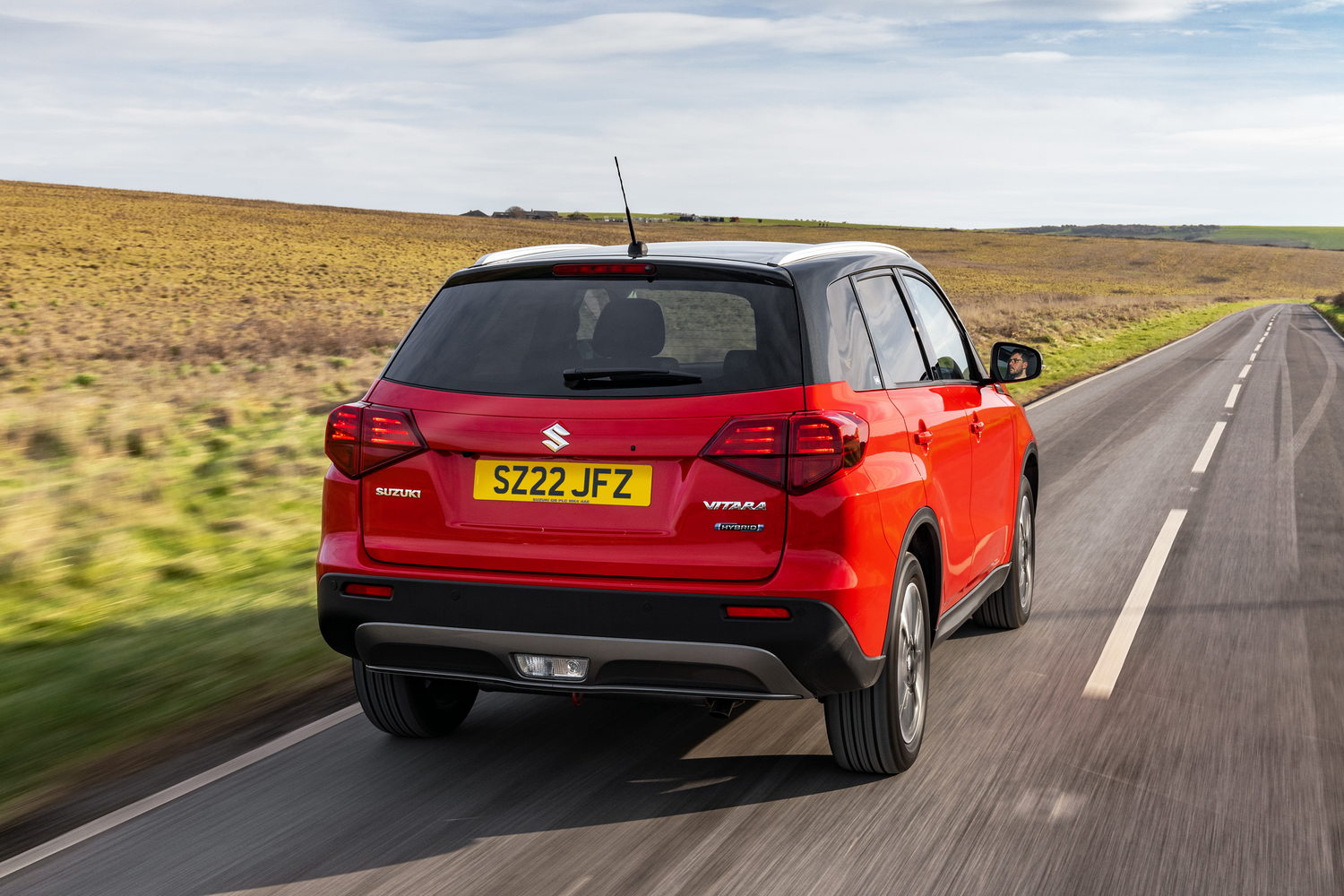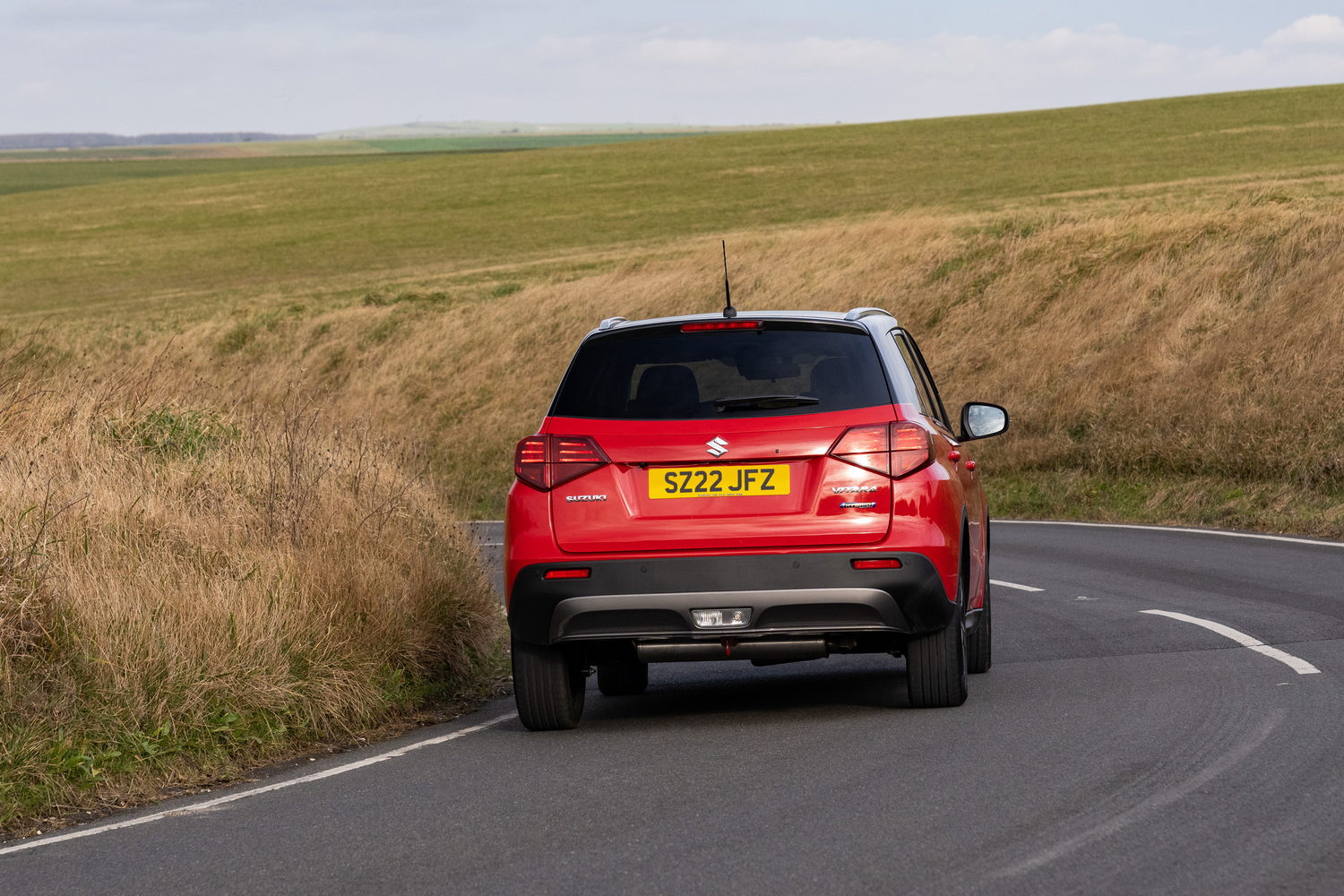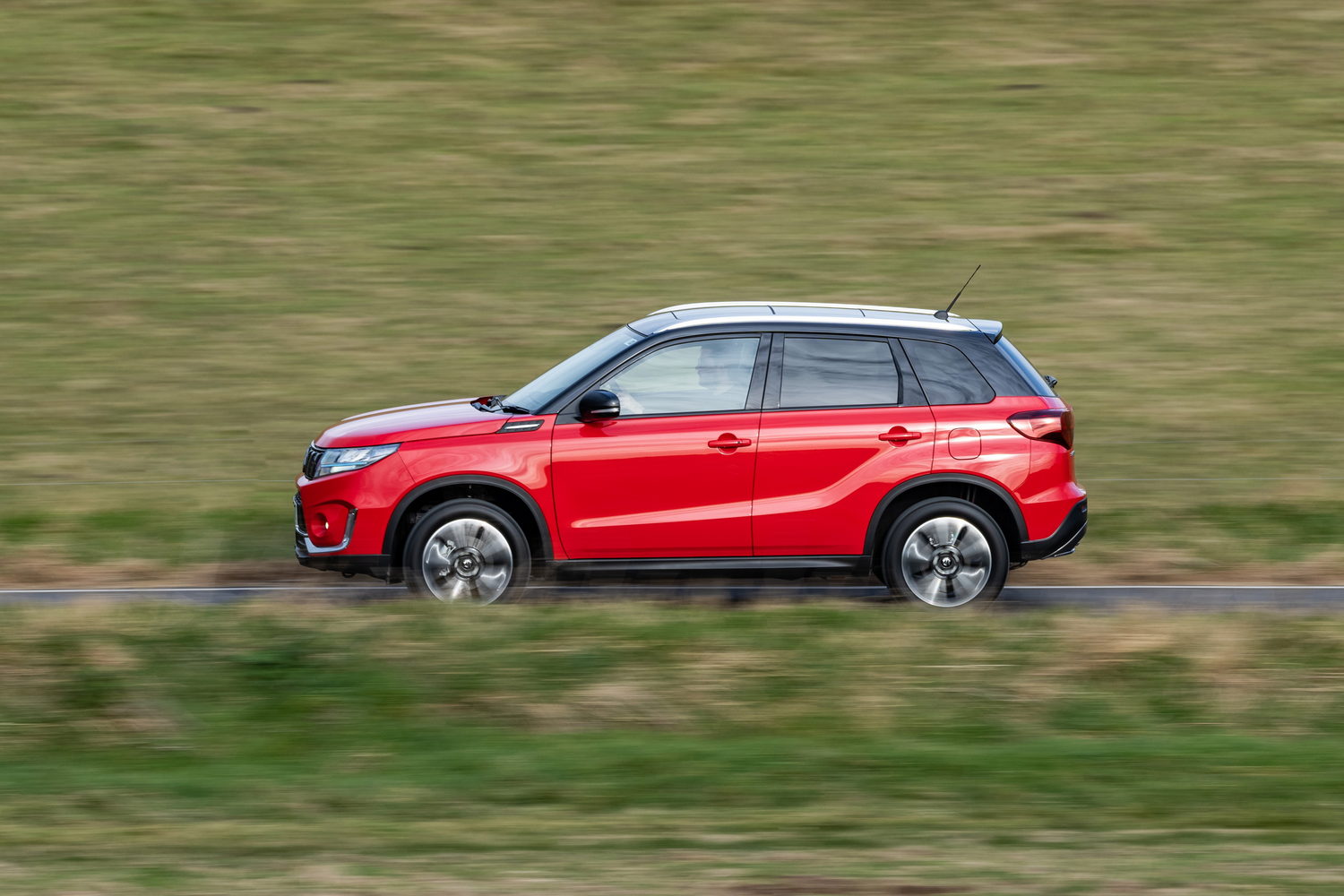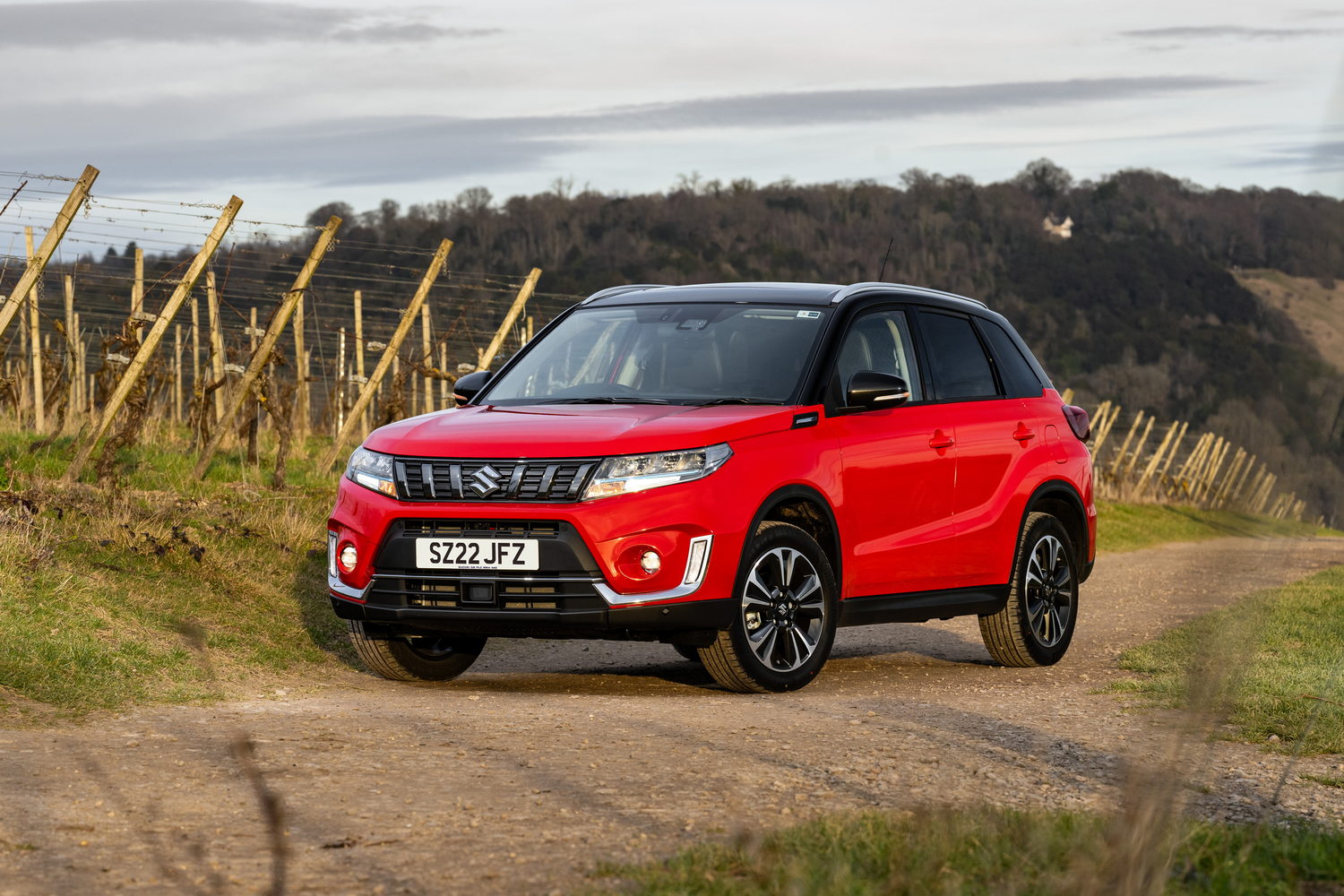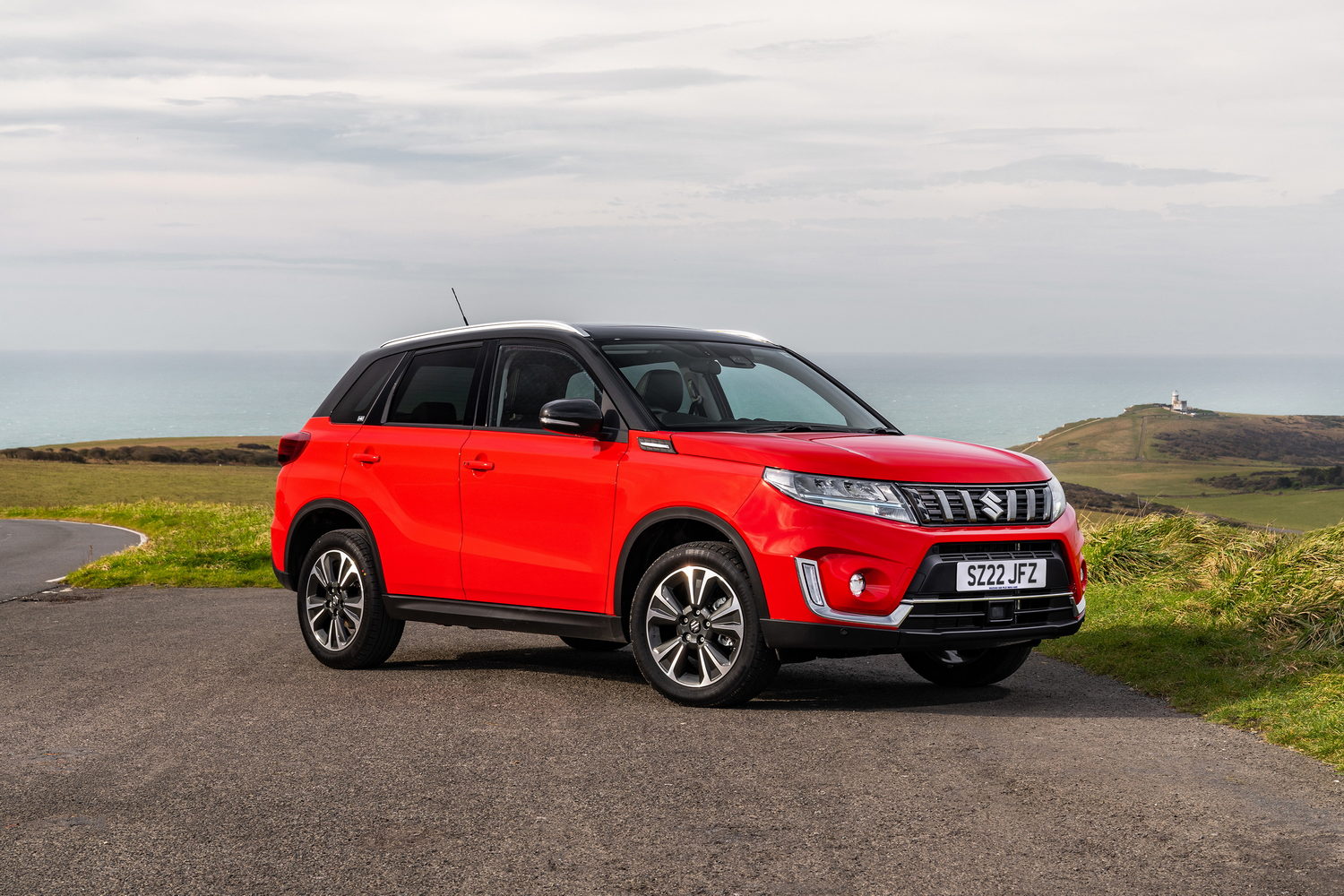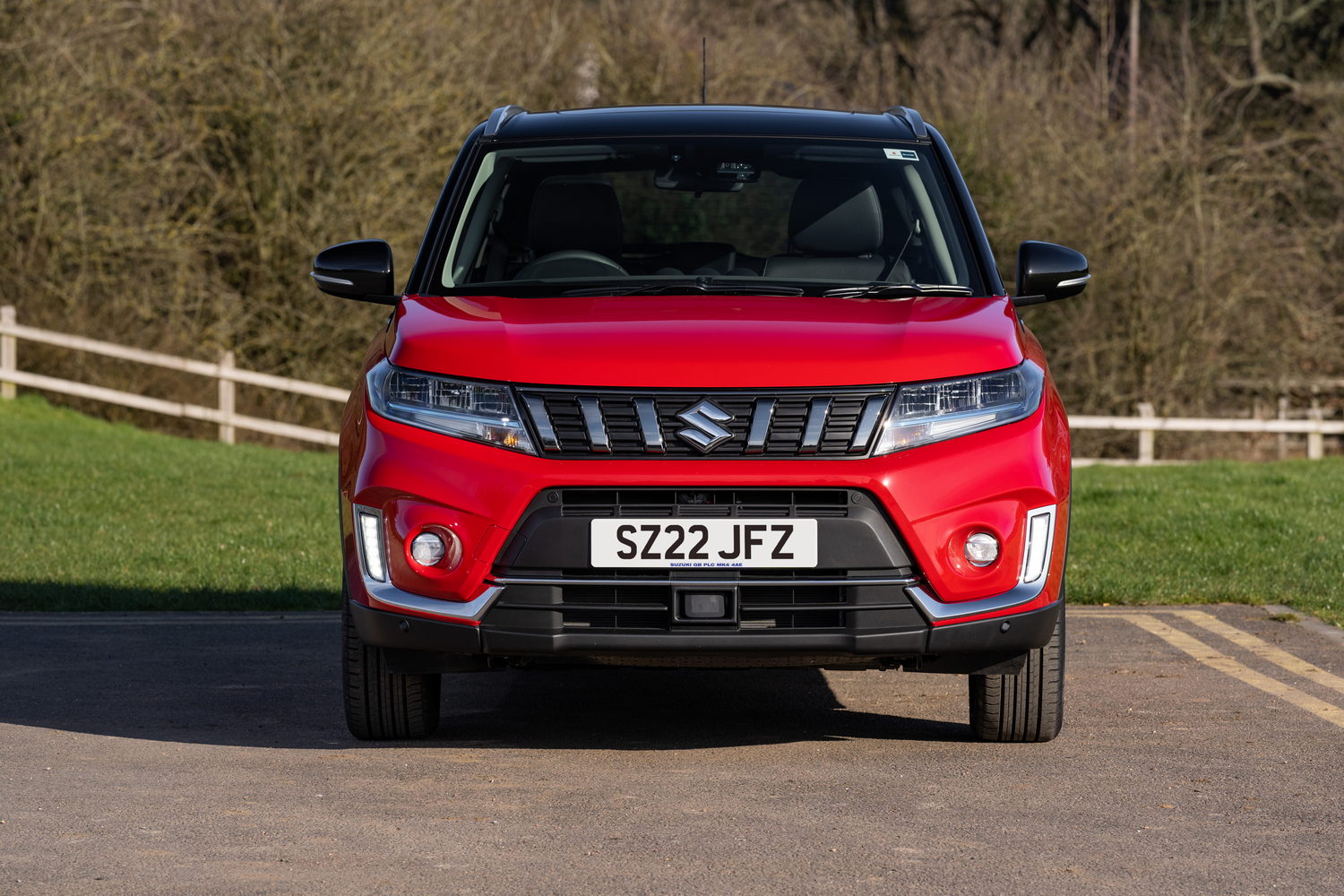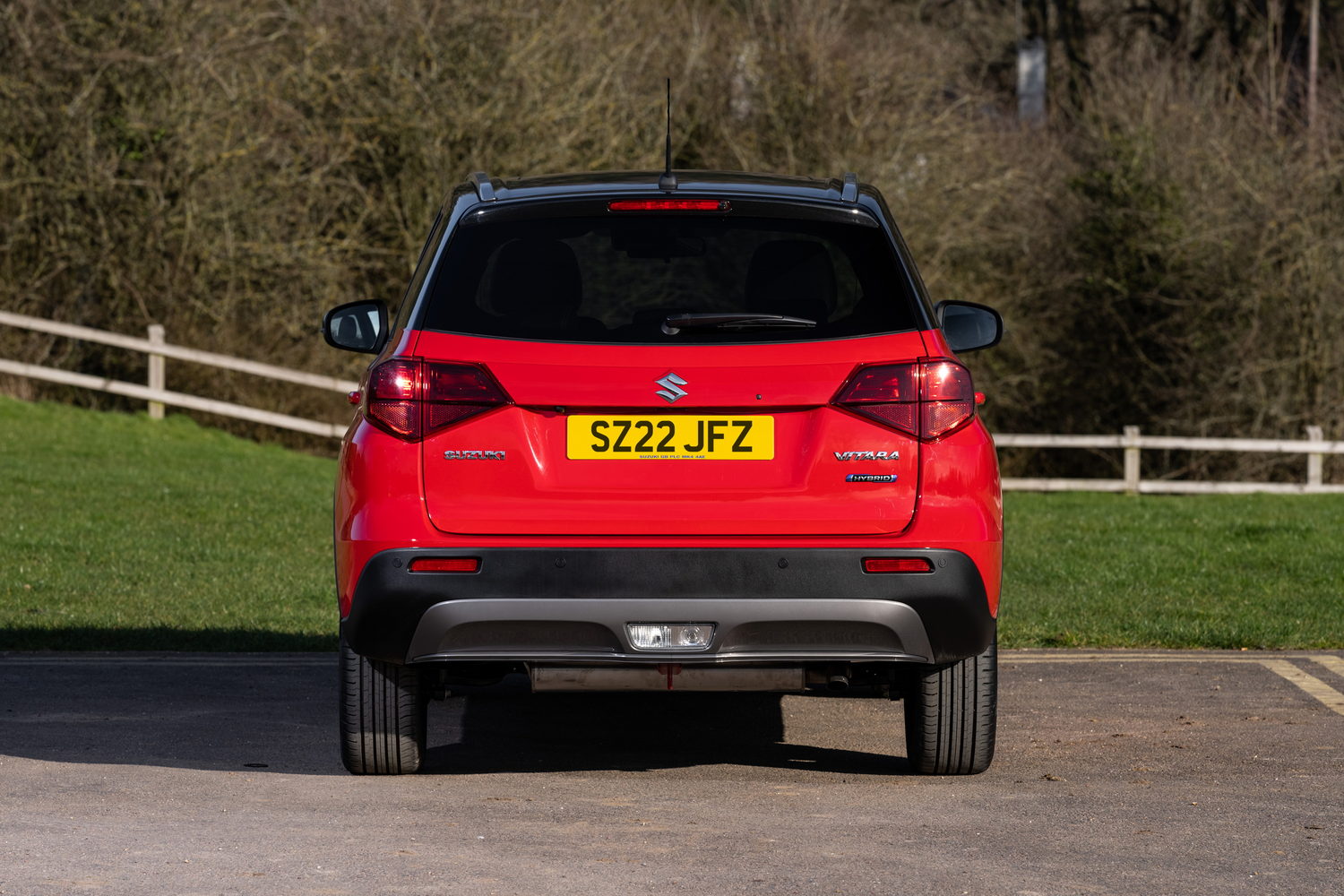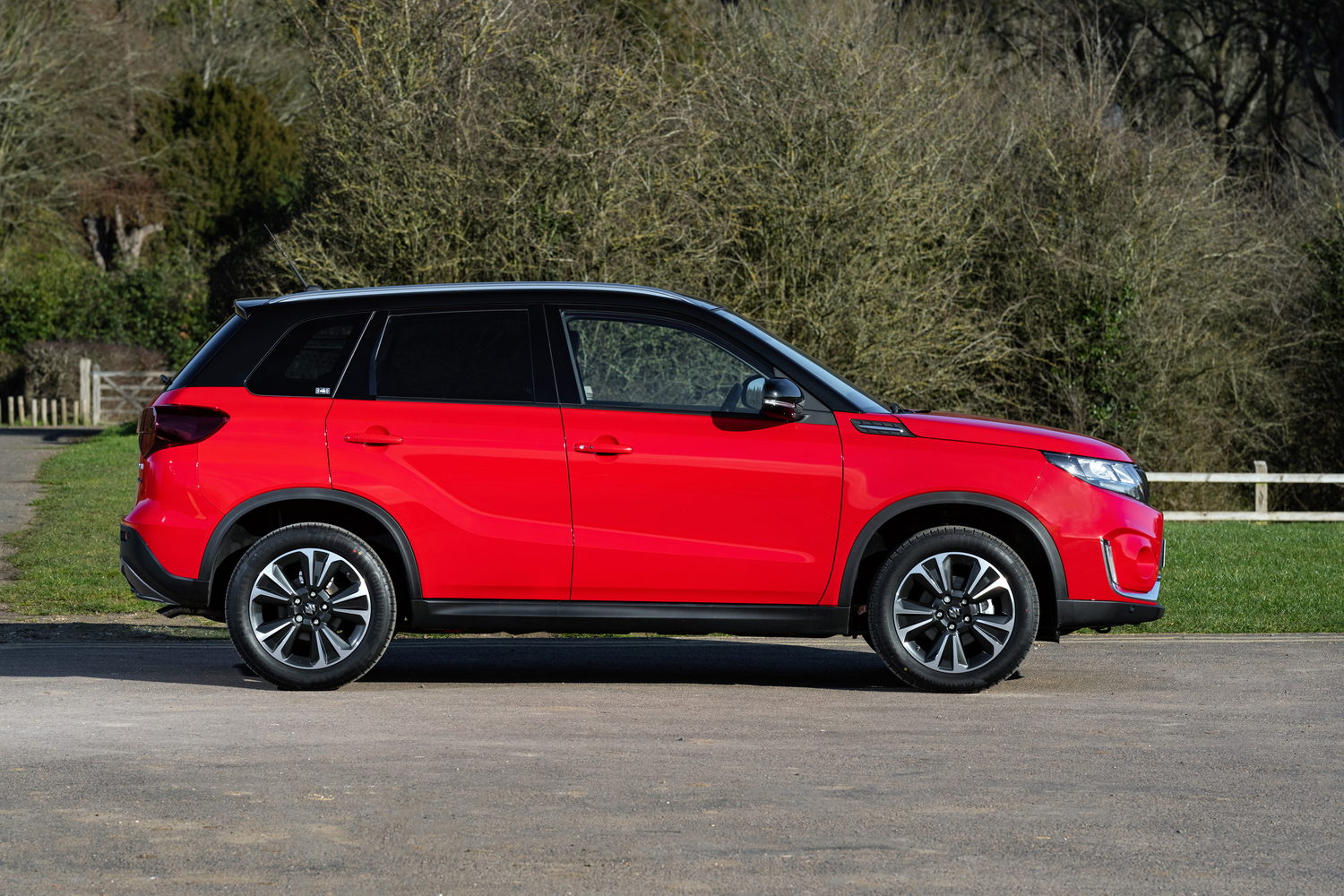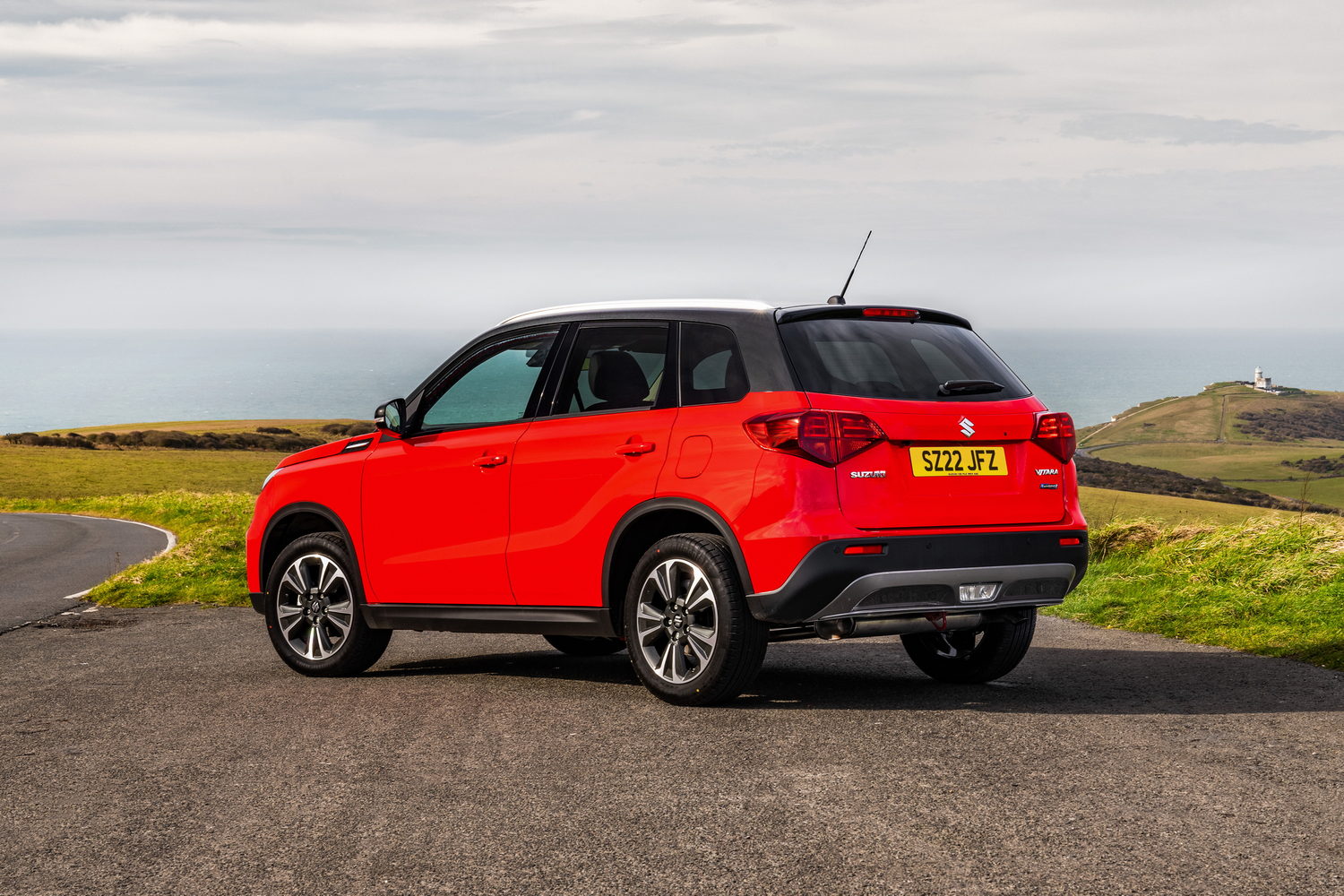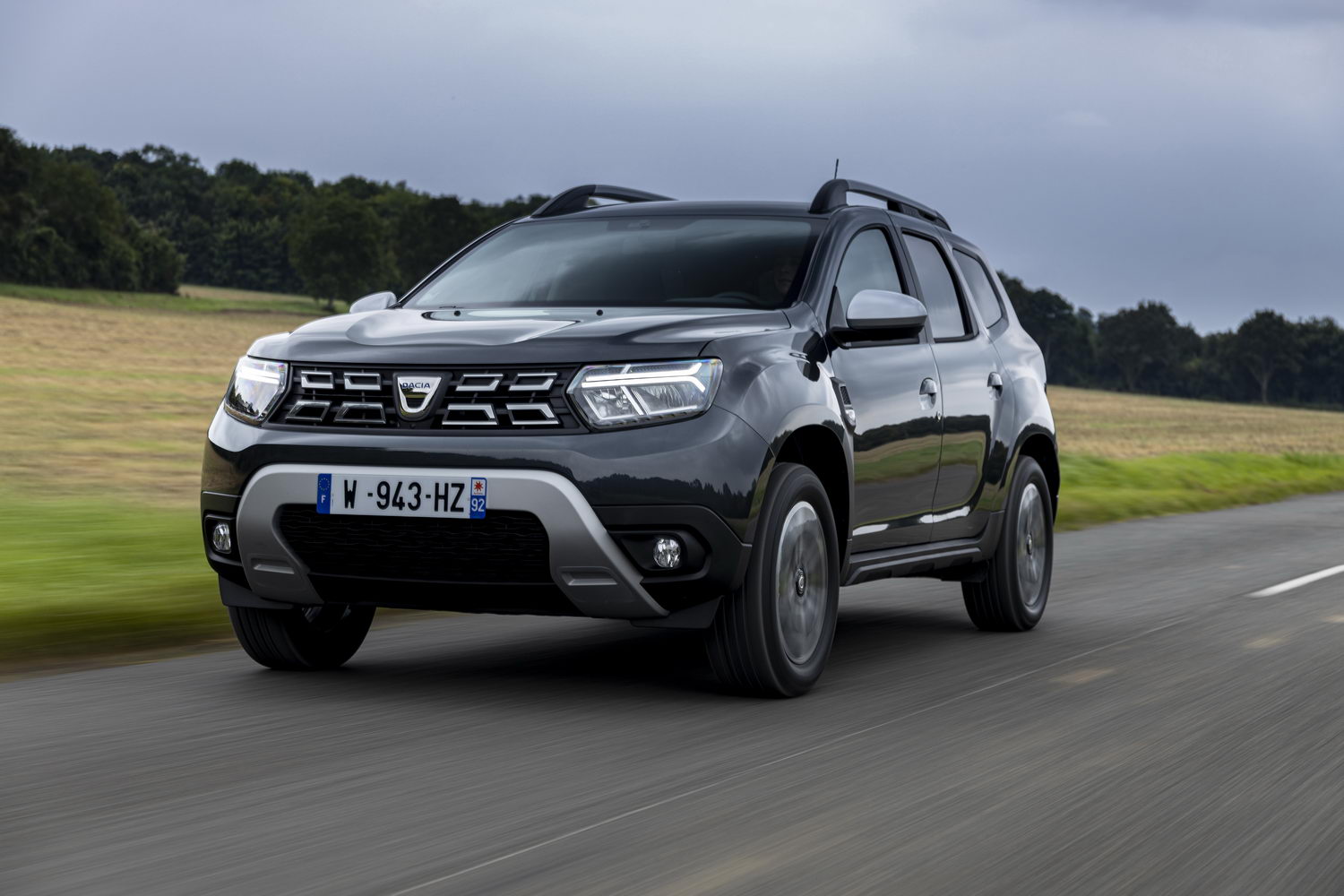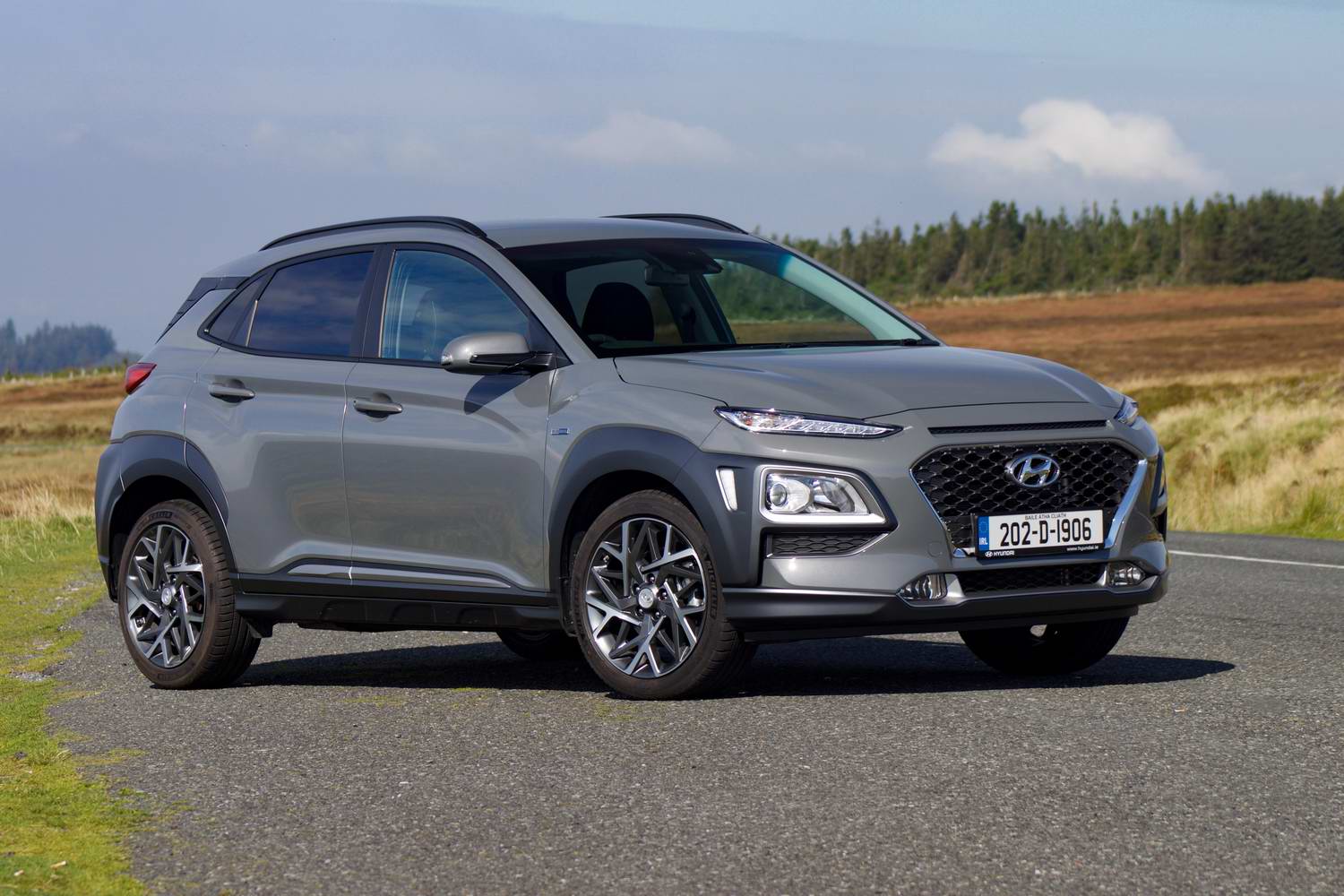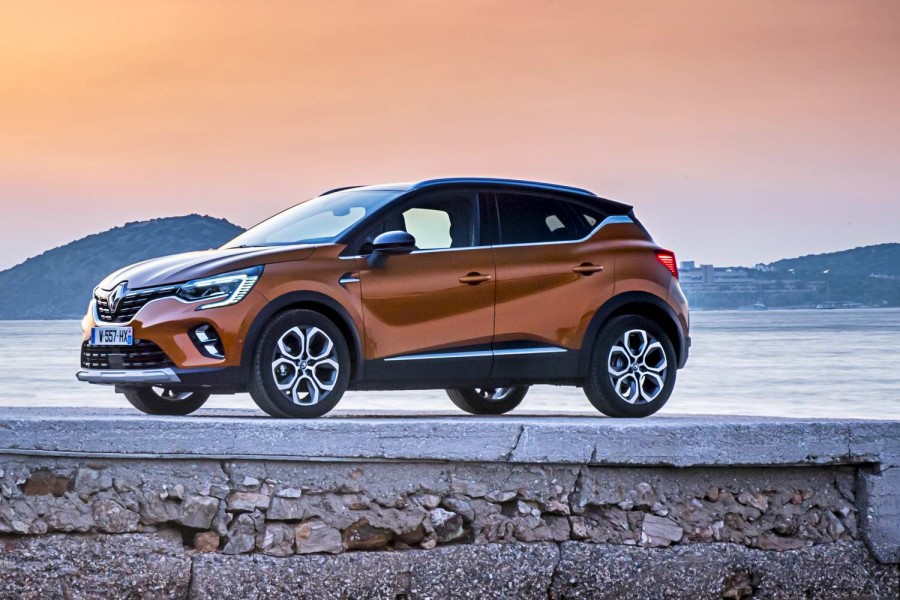The Suzuki Vitara has long been a sensible choice for those seeking a small, well-priced SUV with a bit of off-road capability. But the range is a little confusing, with an engine that wears a Hybrid badge, but is in fact a mild-hybrid powertrain - essentially a conventional petrol engine with an enhanced stop-start system. But now Suzuki is set to introduce a new 'Full Hybrid' version, offering improved economy and an electrical system that really can drive the wheels without burning petrol. We've tested it in range-topping SZ5 trim, complete with Suzuki's AllGrip all-wheel-drive system.
In the metal
Apart from the Hybrid badge, which has a dark background and pale lettering, as opposed to the chrome background and blue lettering of the mild-hybrid's Hybrid badge, there's nothing to differentiate the new Vitara from its less electrically assisted siblings. The external design is completely unchanged in every way. No new headlights, no new alloy wheels.
That's no great problem because the current-generation Vitara hasn't aged badly, and the colourful paint options give it a youthful vibe. It doesn't stand out particularly and there's a degree of function over form, but nobody could ever accuse it of being ugly.
The interior hasn't changed either, though, and that's more open to criticism. The design has remained, and so too have the dodgy cabin plastics, particularly on the doors and the lower part of the dashboard. There's some more squidgy material at the top, but for the most part it feels unforgiving and cheap. At least it's robust, with solid switchgear and panels that fit together neatly. The buttons on the steering wheel have a particularly satisfying action, and it helps that slightly softer plastic has been used to make them more tactile.
Unfortunately, the plastics aren't the only weak point of the Vitara cabin. The Full Hybrid version offered Suzuki an opportunity to update some of the aging technology, but the brand has missed the boat. The clunky old trip computer remains, along with the fiddly, low-resolution touchscreen with its awkward controls and '90s graphics. As the avid gamers might put it, it's definitely more PlayStation One than Xbox One. At least it comes with Apple CarPlay and Android Auto as standard, making it much more user-friendly.
In fact, it comes with plenty of standard equipment. Even the basic SZ-T model comes with 17-inch alloy wheels, a reversing camera and climate control, as well as navigation and keyless entry with push-button start. There's copious amounts of safety equipment, too, including lane departure warning, autonomous emergency braking and a blind-spot monitor to alert you when there's something in the hard-to-see areas over your shoulders. Move up to this top-of-the-range SZ5 model and you get a panoramic sunroof that makes the cabin feel much airier, plus suede seat fabric and parking sensors at the front and rear.
But while there may be plenty of technology, space is less plentiful. The addition of batteries for the hybrid system has seen the boot size reduced, with just 289 litres of space when the rear seats are upright. That's about 85 litres less than the mild-hybrid Vitara, and it puts the little Suzuki far behind some of its more spacious rivals. Happily, interior space is unchanged, and there's still enough room to seat four adults without getting feeling hemmed in. It's hardly class-leading in terms of leg- or headroom, but it's big enough for most people's needs.
Driving it
Boot space aside, all the differences between the Hybrid and Full Hybrid Vitaras can be found under the skin. There the Vitara uses an evolution of the 1.5-litre petrol engine found in the boxy Jimny, then pairs that with a 140-volt hybrid system that allows the car to run on electricity when coasting, crawling or reversing.
The electric motor and petrol engine both send their power to the wheels via what Suzuki calls the Auto Gear Shift transmission, or AGS. Although it sounds like an automatic and is controlled like an automatic, it isn't an automatic. It's actually an automated manual, which means it does all the clutch and gear selection work for you - it doesn't even have a clutch pedal - but it's slower to shift than a proper automatic gearbox.
According to Suzuki, that gearbox has to deal with 115hp and 138Nm of torque from the petrol engine, while the electric motor produces 33hp and 60Nm of torque. Together, the two allow the Vitara to lope from 0-100km/h in 12.7 seconds, but AllGrip all-wheel-drive models such as our test car will take 13.5 seconds to manage the same feat. More importantly, though, the electric motor's assistance allows the front-drive models to burn just 5.4 litres of petrol for every 100km travelled on the official economy test, with 121g of carbon dioxide emitted every kilometre. The AllGrip versions, meanwhile, manage 5.9 litres per 100km and 132g/km.
All that means the Vitara Full Hybrid beats the confusingly named mild-hybrid Hybrid model for economy, but not by much. Compared with the mild-hybrid when fitted with the (soon-to-be-discontinued) automatic gearbox, the Full Hybrid cuts emissions by 8g/km and fuel consumption by 0.3 litres per 100km. Interestingly, the Full Hybrid's figures are identical to those of the manual mild-hybrid, which means there's no advantage to the Full Hybrid except for the self-shifting gearbox.
And that's a problem for the Full Hybrid, because the gearbox is a bit ropey. It's slow and jerky when changing gear, it makes some strange gear selections and the refinement you expect from a hybrid suddenly goes out of the window whenever you demand more than a morsel of the Vitara's performance. Admittedly, the proper automatic in the mild-hybrid Vitara isn't perfect, but it's smoother and more refined than this.
Some of the blame lies with the engine, which makes a rather unpleasant roar at higher engine speeds, but it's the gearbox that chooses when that might be. You can learn the transmission's ways a little - lifting off can prompt a gear change, and it shifts more smoothly when your foot is off the gas, as with a normal manual - but we can't help thinking a true automatic would have been better.
There are some upsides, though. The hybrid system is quite effective, and the electric motor takes over the propulsion duties more regularly than you might expect, which means it should be quite economical around town. On a more varied selection of roads, however, our test suggested the Full Hybrid was little more efficient than the mild-hybrid.
One boon is the surprising turn of pace. Suzuki might claim our AllGrip test car could manage 0-100km/h in 13.5 seconds, but that seems pessimistic. Perhaps it isn't as fast as the Hybrid, but it's quick enough. Overtaking didn't feel too perilous, and it had more than enough poke to keep pace with motorway traffic - it was just a noisy process.
Otherwise, the Full Hybrid is much like any other Vitara. The handling is safe and predictable, if uninspiring, but there's plenty of grip and the body lean is kept in check. The refinement is a let-down - there's a lot of wind and road noise at speed - but the ride isn't bad for something with 175mm of ground clearance and a relatively short wheelbase. It doesn't iron out all the bumps, but it doesn't jolt you too much either.
Perhaps the steering is too light, and the brake pedal has a slightly odd feel (it conspires to be both firm and numb at the same time), but that's likely to be partly down to the regenerative braking that helps charge up the battery. It's certainly no worse than in some other hybrids we've tested, and at least the brakes are effective enough to inspire some confidence.
What you get for your money
This Full Hybrid version of the Vitara replaces the existing automatic mild-hybrid models and costs from €28,995 as an SZ-T. That’s €2,460 more than the entry-level Vitara SZ-T with a manual gearbox and the only single option that can be added is metallic paint, at €375. Suzuki Ireland works with Bank of Ireland to offer a PCP rate of zero per cent, resulting in €299 per month payments on the Full Hybrid SZ-T following a €6,744 desposit.
Summary
The Vitara Full Hybrid is, in many ways, a backward step for Suzuki. The Japanese company has sacrificed driveability and desirability to gain a tiny improvement in efficiency, and that sacrifice has backfired in dramatic fashion. In fairness, we suspect the gearbox is more problematic than the engine, but neither cover themselves in glory. Stick with mild-hybrid power and you'll get better value, a better driving experience and similar economy.

